- Grades 6-12
- School Leaders
FREE Thanksgiving Worksheet Bundle for Last-Minute Activities 🦃

76 Easy Science Experiments Using Materials You Already Have On Hand
Because science doesn’t have to be complicated.

If there is one thing that is guaranteed to get your students excited, it’s a good science experiment! While some experiments require expensive lab equipment or dangerous chemicals, there are plenty of cool projects you can do with regular household items. We’ve rounded up a big collection of easy science experiments that anybody can try, and kids are going to love them!
Easy Chemistry Science Experiments
Easy physics science experiments, easy biology and environmental science experiments, easy engineering experiments and stem challenges.
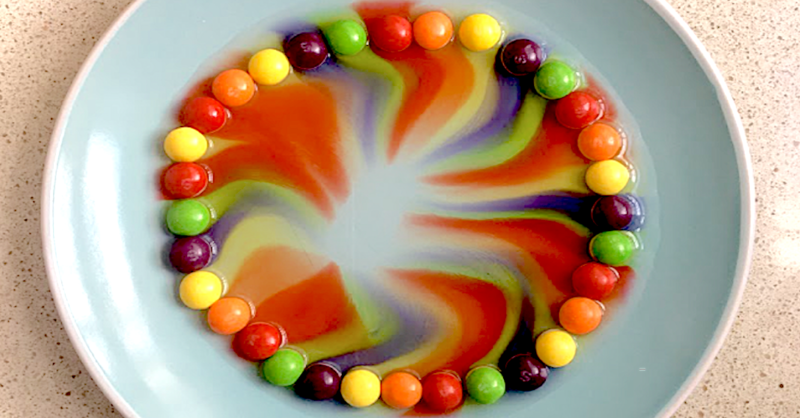
1. Taste the rainbow
Teach your students about diffusion while creating a beautiful and tasty rainbow. Tip: Have extra Skittles on hand so your class can eat a few!
Learn more: Skittles Diffusion
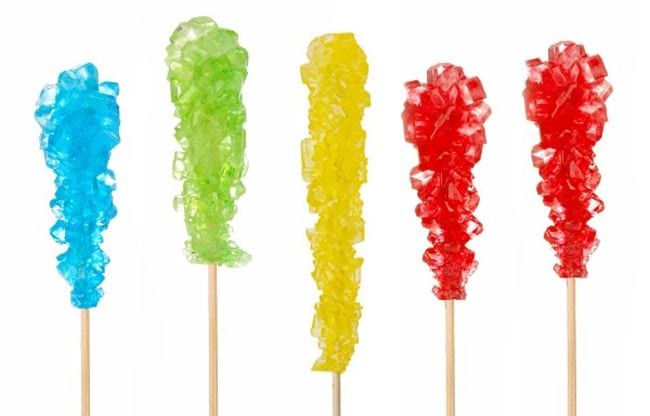
2. Crystallize sweet treats
Crystal science experiments teach kids about supersaturated solutions. This one is easy to do at home, and the results are absolutely delicious!
Learn more: Rock Candy Experiment
3. Make a volcano erupt
This classic experiment demonstrates a chemical reaction between baking soda (sodium bicarbonate) and vinegar (acetic acid), which produces carbon dioxide gas, water, and sodium acetate.
Learn more: Baking Soda Volcano (Guide + Printable Reflection Sheet)
4. Make elephant toothpaste
This fun project uses yeast and a hydrogen peroxide solution to create overflowing “elephant toothpaste.” Tip: Add an extra fun layer by having kids create toothpaste wrappers for plastic bottles.
Learn more: Elephant Toothpaste (Guide + Printable Reflection Sheet)
5. Blow the biggest bubbles you can
Add a few simple ingredients to dish soap solution to create the largest bubbles you’ve ever seen! Kids learn about surface tension as they engineer these bubble-blowing wands.
Learn more: Giant Soap Bubbles (Guide + Printable Reflection Sheet)
6. Demonstrate the “magic” leakproof bag
All you need is a zip-top plastic bag, sharp pencils, and water to blow your kids’ minds. Once they’re suitably impressed, teach them how the “trick” works by explaining the chemistry of polymers.
Learn more: Leakproof Bag (Guide + Printable Reflection Sheet)
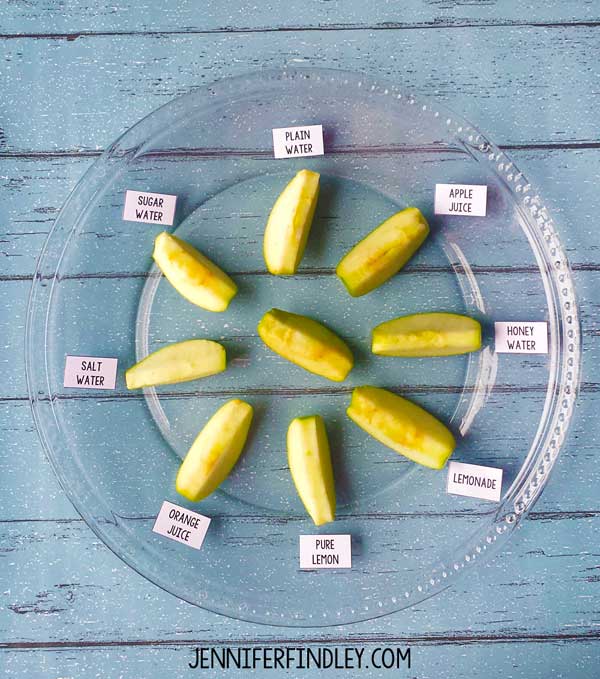
7. Use apple slices to learn about oxidation
Have students make predictions about what will happen to apple slices when immersed in different liquids, then put those predictions to the test. Have them record their observations.
Learn more: Apple Oxidation
8. Float a marker man
Their eyes will pop out of their heads when you “levitate” a stick figure right off the table! This experiment works due to the insolubility of dry-erase marker ink in water, combined with the lighter density of the ink.
Learn more: Floating Marker Man

9. Discover density with hot and cold water
There are a lot of easy science experiments you can do with density. This one is extremely simple, involving only hot and cold water and food coloring, but the visuals make it appealing and fun.
Learn more: Hot and Cold Water Science Experiment

10. Layer more liquids
This density demo is a little more complicated, but the effects are spectacular. Slowly layer liquids like honey, dish soap, water, and rubbing alcohol in a glass. Kids will be amazed when the liquids float one on top of the other like magic (except it is really science).
Learn more: Layered Liquids

11. Grow a carbon sugar snake
Easy science experiments can still have impressive results. This eye-popping chemical reaction demonstration only requires simple supplies like sugar, baking soda, and sand.
Learn more: Carbon Sugar Snake
12. Mix up some slime
Tell kids you’re going to make slime at home, and watch their eyes light up! There are a variety of ways to make slime, so try a few different recipes to find the one you like best.
Learn more: 4 Slime Recipes (Guide + Printable Reflection Sheet)

13. Make homemade bouncy balls
These homemade bouncy balls are easy to make since all you need is glue, food coloring, borax powder, cornstarch, and warm water. You’ll want to store them inside a container like a plastic egg because they will flatten out over time.
Learn more: Make-Your-Own Bouncy Balls

14. Create eggshell chalk
Eggshells contain calcium, the same material that makes chalk. Grind them up and mix them with flour, water, and food coloring to make your very own sidewalk chalk.
Learn more: Eggshell Chalk
15. Make naked eggs
This is so cool! Use vinegar to dissolve the calcium carbonate in an eggshell to discover the membrane underneath that holds the egg together. Then, use the “naked” egg for another easy science experiment that demonstrates osmosis .
Learn more: Egg and Vinegar Experiment (Guide + Printable Reflection Sheet)
16. Turn milk into plastic
This sounds a lot more complicated than it is, but don’t be afraid to give it a try. Use simple kitchen supplies to create plastic polymers from plain old milk. Sculpt them into cool shapes when you’re done.

17. Test pH using cabbage
Teach kids about acids and bases without needing pH test strips. Simply boil some red cabbage and use the resulting water to test various substances—acids turn red and bases turn green.
Learn more: Cabbage pH

18. Clean some old coins
Use common household items to make old oxidized coins clean and shiny again in this simple chemistry experiment. Ask kids to predict (hypothesize) which will work best, then expand the learning by doing some research to explain the results.
Learn more: Cleaning Coins

19. Pull an egg into a bottle
This classic easy science experiment never fails to delight. Use the power of air pressure to suck a hard-boiled egg into a jar, no hands required.
Learn more: Egg in a Bottle
20. Blow up a balloon without blowing
Chances are good you probably did easy science experiments like this when you were in school. The baking soda and vinegar balloon experiment demonstrates the reactions between acids and bases when you fill a bottle with vinegar and a balloon with baking soda.
Learn more: Baking Soda and Vinegar Balloon (Guide + Printable Reflection Sheet)
21. Assemble a DIY lava lamp
This 1970s trend is back—as an easy science experiment! This activity combines acid-base reactions with density for a totally groovy result.
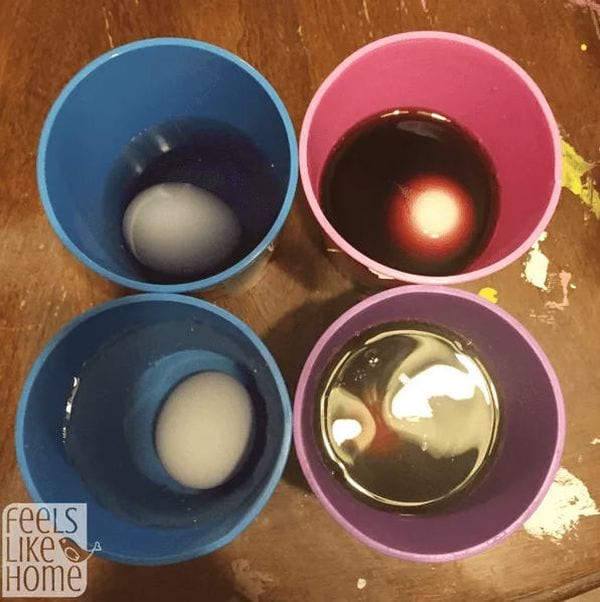
22. Explore how sugary drinks affect teeth
The calcium content of eggshells makes them a great stand-in for teeth. Use eggs to explore how soda and juice can stain teeth and wear down the enamel. Expand your learning by trying different toothpaste-and-toothbrush combinations to see how effective they are.
Learn more: Sugar and Teeth Experiment
23. Mummify a hot dog
If your kids are fascinated by the Egyptians, they’ll love learning to mummify a hot dog! No need for canopic jars , just grab some baking soda and get started.
24. Extinguish flames with carbon dioxide
This is a fiery twist on acid-base experiments. Light a candle and talk about what fire needs in order to survive. Then, create an acid-base reaction and “pour” the carbon dioxide to extinguish the flame. The CO2 gas acts like a liquid, suffocating the fire.
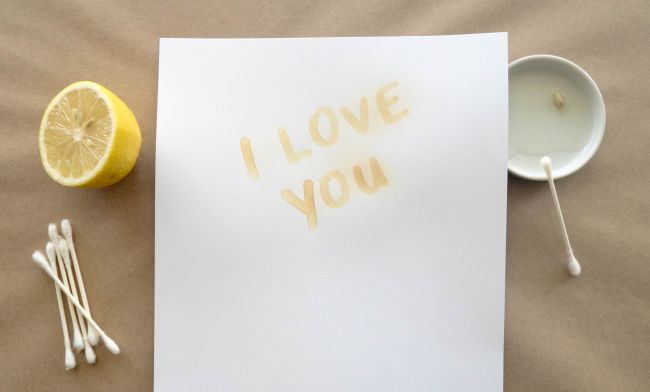
25. Send secret messages with invisible ink
Turn your kids into secret agents. Write messages with a paintbrush dipped in lemon juice, then hold the paper over a heat source and watch the invisible become visible as oxidation goes to work.
Learn more: Invisible Ink
26. Create dancing popcorn
This is a fun version of the classic baking soda and vinegar experiment, perfect for the younger crowd. The bubbly mixture causes popcorn to dance around in the water.
Learn more: Dancing Popcorn (Guide + Printable Reflection Sheet)
27. Shoot a soda geyser sky-high
You’ve always wondered if this really works, so it’s time to find out for yourself. Kids will marvel at the chemical reaction that sends diet soda shooting high in the air when Mentos are added.
Learn more: Mentos and Coke Experiment (Guide + Printable Reflection Sheet)
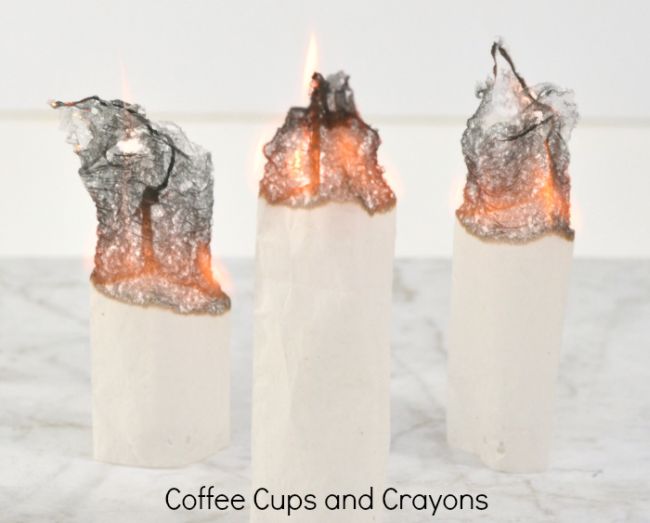
28. Send a teabag flying
Hot air rises, and this experiment can prove it. You’ll want to supervise kids with fire, of course. For added safety, try this one outside.
Learn more: Flying Tea Bags
29. Create magic milk
This fun and easy science experiment demonstrates principles related to surface tension, molecular interactions, and fluid dynamics.
Learn more: Magic Milk Experiment (Guide + Printable Reflection Sheet)
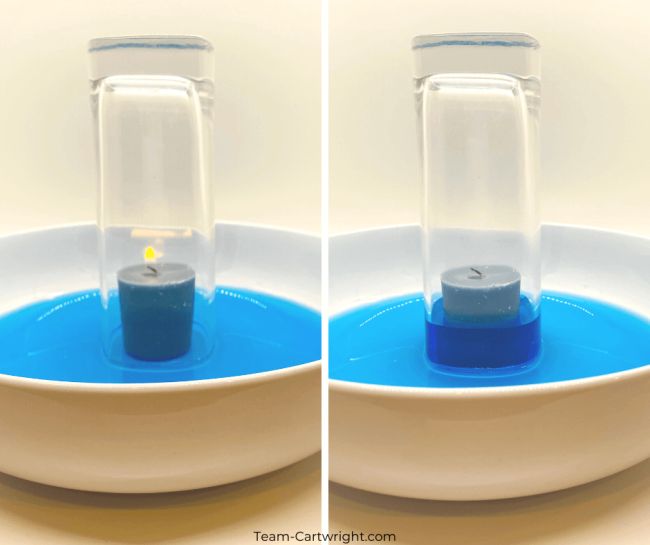
30. Watch the water rise
Learn about Charles’s law with this simple experiment. As the candle burns, using up oxygen and heating the air in the glass, the water rises as if by magic.
Learn more: Rising Water Experiment

31. Learn about capillary action
Kids will be amazed as they watch the colored water move from glass to glass, and you’ll love the easy and inexpensive setup. Gather some water, paper towels, and food coloring to teach the scientific magic of capillary action.
Learn more: Capillary Action
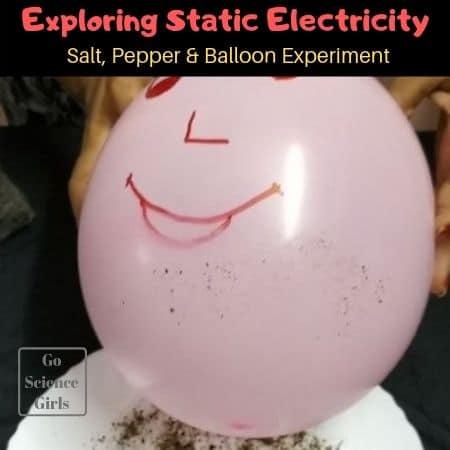
32. Give a balloon a beard
Equally educational and fun, this experiment will teach kids about static electricity using everyday materials. Kids will get a kick out of creating beards on their balloon people!
Learn more: Static Electricity

33. Find your way with a DIY compass
Here’s an old classic that never fails to impress. Magnetize a needle, float it on the water’s surface, and it will always point north.
Learn more: How To Make a Compass
34. Crush a can using air pressure
Sure, it’s easy to crush a soda can with your bare hands, but what if you could do it without touching it at all? That’s the power of air pressure!

35. Tell time using the sun
While people use clocks or even phones to tell time today, there was a time when a sundial was the best means to do that. Kids can create their own sundials using everyday materials like cardboard and pencils.
Learn more: Make Your Own Sundial
36. Launch a bottle rocket
Grab a cork, plastic bottle, cardboard, duct tape, and bike pump to learn about the laws of motion.
Learn more: Bottle Rocket (Guide + Printable Reflection Sheet)
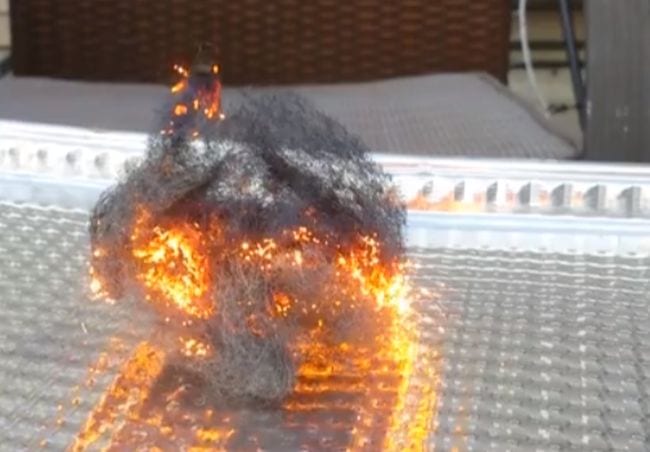
37. Make sparks with steel wool
All you need is steel wool and a 9-volt battery to perform this science demo that’s bound to make their eyes light up! Kids learn about chain reactions, chemical changes, and more.
Learn more: Steel Wool Electricity
38. Levitate a Ping-Pong ball
This experiment is really all about Bernoulli’s principle. You only need plastic bottles, bendy straws, and Ping-Pong balls to make the science magic happen.

39. Whip up a tornado in a bottle
There are plenty of versions of this classic experiment out there, but we love this one because it sparkles. Kids learn about a vortex and what it takes to create one.
Learn more: Tornado in a Bottle
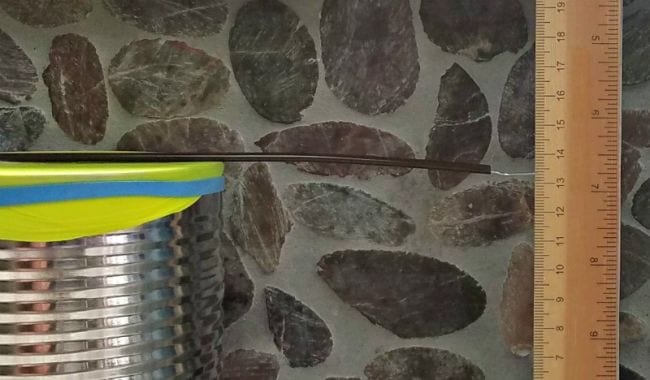
40. Monitor air pressure with a DIY barometer
This simple but effective DIY science project teaches kids about air pressure and meteorology. They’ll have fun tracking and predicting the weather with their very own barometer.
Learn more: How To Make a Barometer
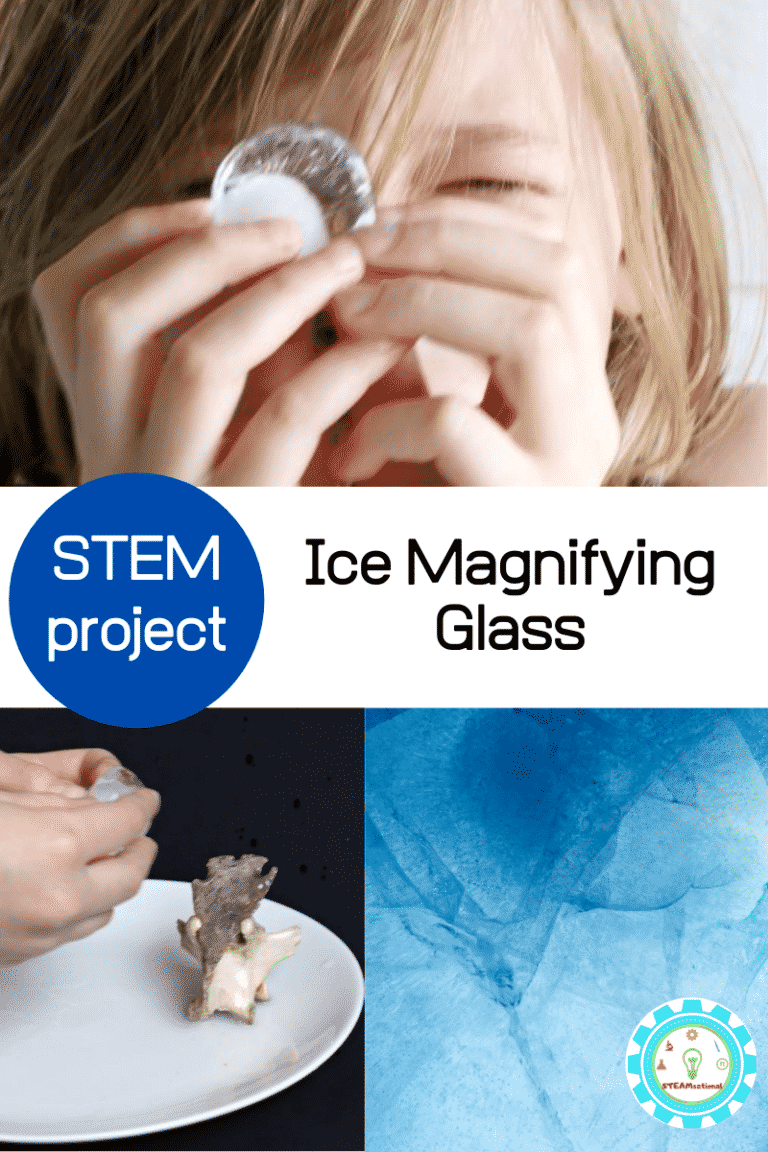
41. Peer through an ice magnifying glass
Students will certainly get a thrill out of seeing how an everyday object like a piece of ice can be used as a magnifying glass. Be sure to use purified or distilled water since tap water will have impurities in it that will cause distortion.
Learn more: Ice Magnifying Glass

42. String up some sticky ice
Can you lift an ice cube using just a piece of string? This quick experiment teaches you how. Use a little salt to melt the ice and then refreeze the ice with the string attached.
Learn more: Sticky Ice

43. “Flip” a drawing with water
Light refraction causes some really cool effects, and there are multiple easy science experiments you can do with it. This one uses refraction to “flip” a drawing; you can also try the famous “disappearing penny” trick .
Learn more: Light Refraction With Water
44. Color some flowers
We love how simple this project is to re-create since all you’ll need are some white carnations, food coloring, glasses, and water. The end result is just so beautiful!
45. Use glitter to fight germs
Everyone knows that glitter is just like germs—it gets everywhere and is so hard to get rid of! Use that to your advantage and show kids how soap fights glitter and germs.
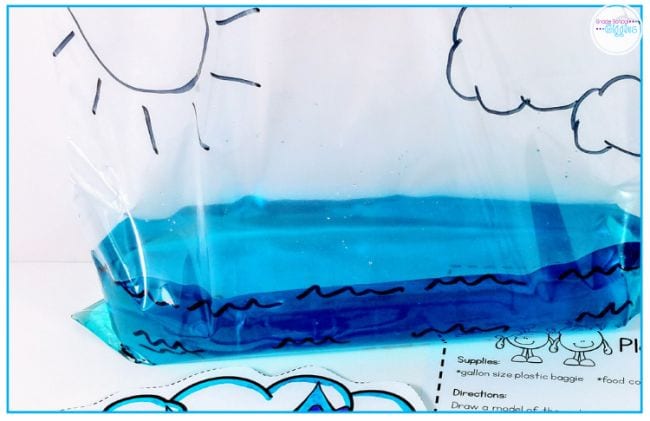
46. Re-create the water cycle in a bag
You can do so many easy science experiments with a simple zip-top bag. Fill one partway with water and set it on a sunny windowsill to see how the water evaporates up and eventually “rains” down.
Learn more: Water Cycle in a Bag and Water Cycle Lesson Slides and Video
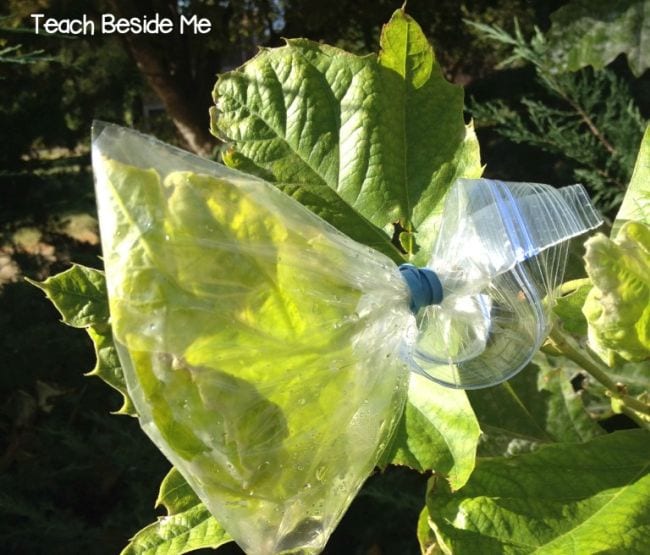
47. Learn about plant transpiration
Your backyard is a terrific place for easy science experiments. Grab a plastic bag and rubber band to learn how plants get rid of excess water they don’t need, a process known as transpiration.
Learn more: Plant Transpiration

48. Clean up an oil spill
Before conducting this experiment, teach your students about engineers who solve environmental problems like oil spills. Then, have your students use provided materials to clean the oil spill from their oceans.
Learn more: Oil Spill

49. Construct a pair of model lungs
Kids get a better understanding of the respiratory system when they build model lungs using a plastic water bottle and some balloons. You can modify the experiment to demonstrate the effects of smoking too.
Learn more: Lung Science Experiment
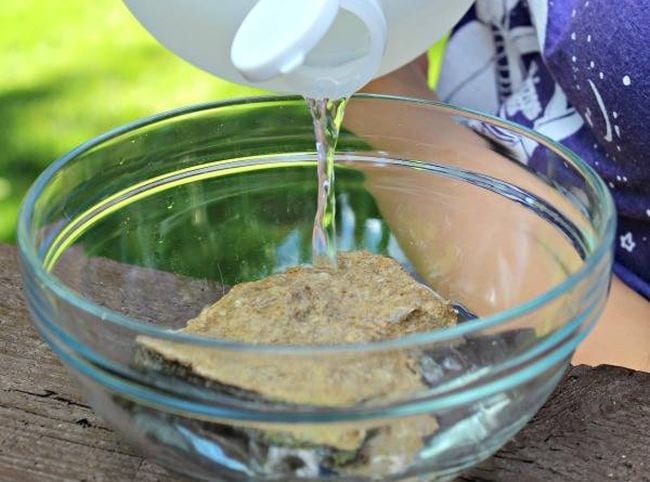
50. Experiment with limestone rocks
Kids love to collect rocks, and there are plenty of easy science experiments you can do with them. In this one, pour vinegar over a rock to see if it bubbles. If it does, you’ve found limestone!
Learn more: Limestone Experiments
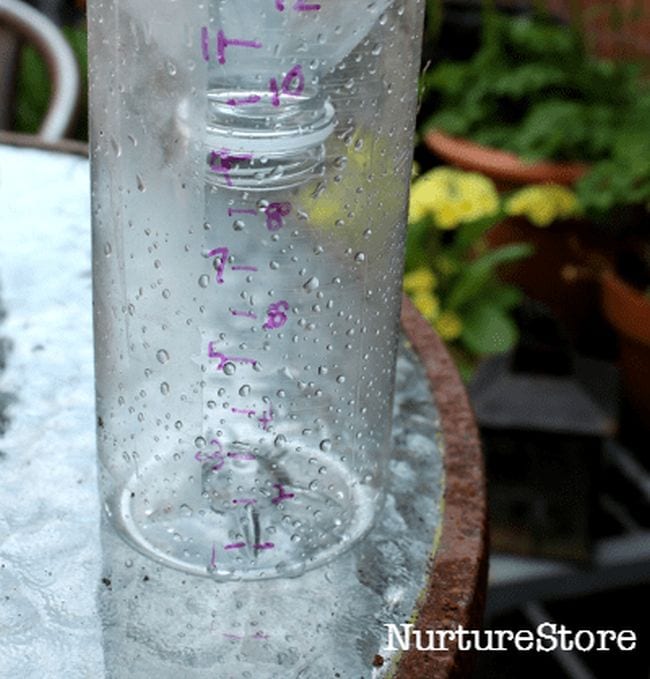
51. Turn a bottle into a rain gauge
All you need is a plastic bottle, a ruler, and a permanent marker to make your own rain gauge. Monitor your measurements and see how they stack up against meteorology reports in your area.
Learn more: How To Make a Rain Gauge
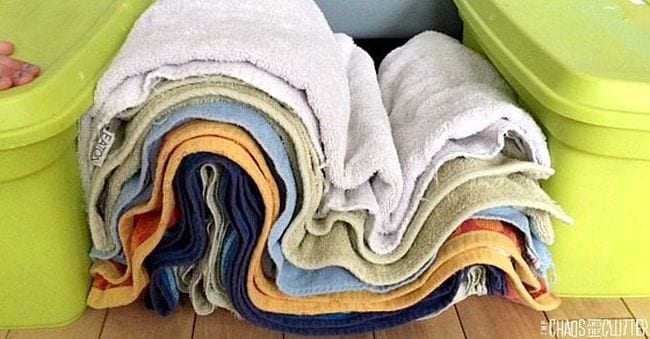
52. Build up towel mountains
This clever demonstration helps kids understand how some landforms are created. Use layers of towels to represent rock layers and boxes for continents. Then pu-u-u-sh and see what happens!
Learn more: Towel Mountains
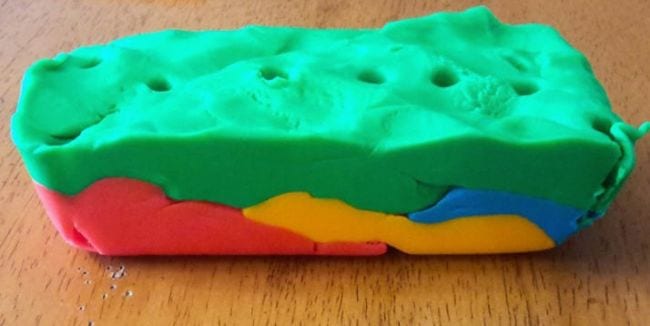
53. Take a play dough core sample
Learn about the layers of the earth by building them out of play dough, then take a core sample with a straw. ( Love Play-Doh? Get more learning ideas here. )
Learn more: Play Dough Core Sampling

54. Project the stars on your ceiling
Use the video lesson in the link below to learn why stars are only visible at night. Then create a DIY star projector to explore the concept hands-on.
Learn more: DIY Star Projector
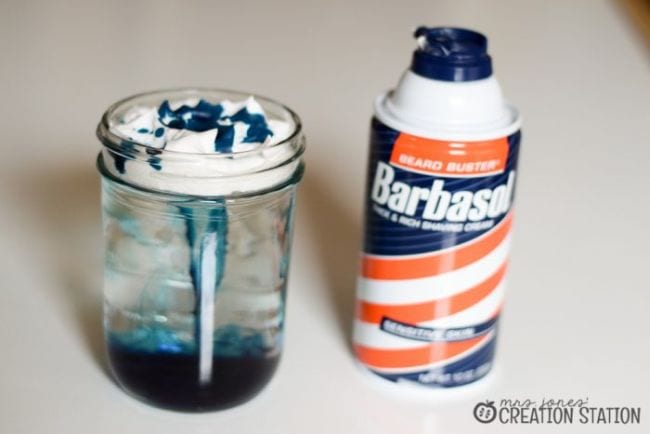
55. Make it rain
Use shaving cream and food coloring to simulate clouds and rain. This is an easy science experiment little ones will beg to do over and over.
Learn more: Shaving Cream Rain
56. Blow up your fingerprint
This is such a cool (and easy!) way to look at fingerprint patterns. Inflate a balloon a bit, use some ink to put a fingerprint on it, then blow it up big to see your fingerprint in detail.
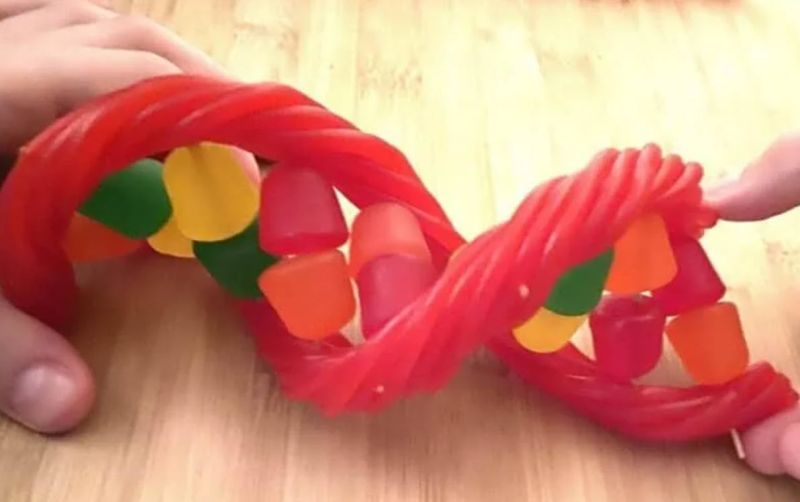
57. Snack on a DNA model
Twizzlers, gumdrops, and a few toothpicks are all you need to make this super-fun (and yummy!) DNA model.
Learn more: Edible DNA Model
58. Dissect a flower
Take a nature walk and find a flower or two. Then bring them home and take them apart to discover all the different parts of flowers.

59. Craft smartphone speakers
No Bluetooth speaker? No problem! Put together your own from paper cups and toilet paper tubes.
Learn more: Smartphone Speakers

60. Race a balloon-powered car
Kids will be amazed when they learn they can put together this awesome racer using cardboard and bottle-cap wheels. The balloon-powered “engine” is so much fun too.
Learn more: Balloon-Powered Car

61. Build a Ferris wheel
You’ve probably ridden on a Ferris wheel, but can you build one? Stock up on wood craft sticks and find out! Play around with different designs to see which one works best.
Learn more: Craft Stick Ferris Wheel
62. Design a phone stand
There are lots of ways to craft a DIY phone stand, which makes this a perfect creative-thinking STEM challenge.
63. Conduct an egg drop
Put all their engineering skills to the test with an egg drop! Challenge kids to build a container from stuff they find around the house that will protect an egg from a long fall (this is especially fun to do from upper-story windows).
Learn more: Egg Drop Challenge Ideas
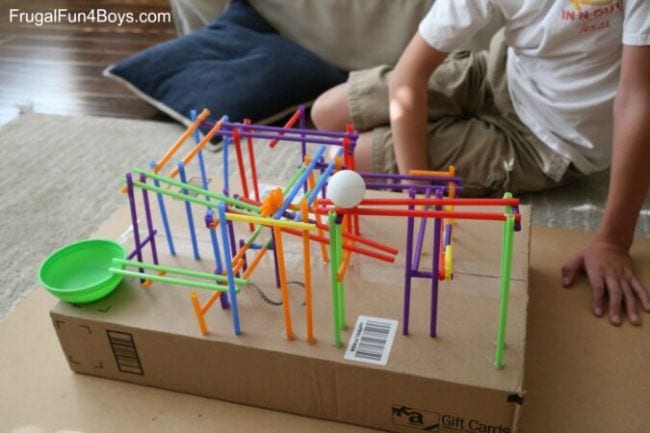
64. Engineer a drinking-straw roller coaster
STEM challenges are always a hit with kids. We love this one, which only requires basic supplies like drinking straws.
Learn more: Straw Roller Coaster
65. Build a solar oven
Explore the power of the sun when you build your own solar ovens and use them to cook some yummy treats. This experiment takes a little more time and effort, but the results are always impressive. The link below has complete instructions.
Learn more: Solar Oven (Guide + Printable Reflection Sheet)

66. Build a Da Vinci bridge
There are plenty of bridge-building experiments out there, but this one is unique. It’s inspired by Leonardo da Vinci’s 500-year-old self-supporting wooden bridge. Learn how to build it at the link, and expand your learning by exploring more about Da Vinci himself.
Learn more: Da Vinci Bridge
67. Step through an index card
This is one easy science experiment that never fails to astonish. With carefully placed scissor cuts on an index card, you can make a loop large enough to fit a (small) human body through! Kids will be wowed as they learn about surface area.
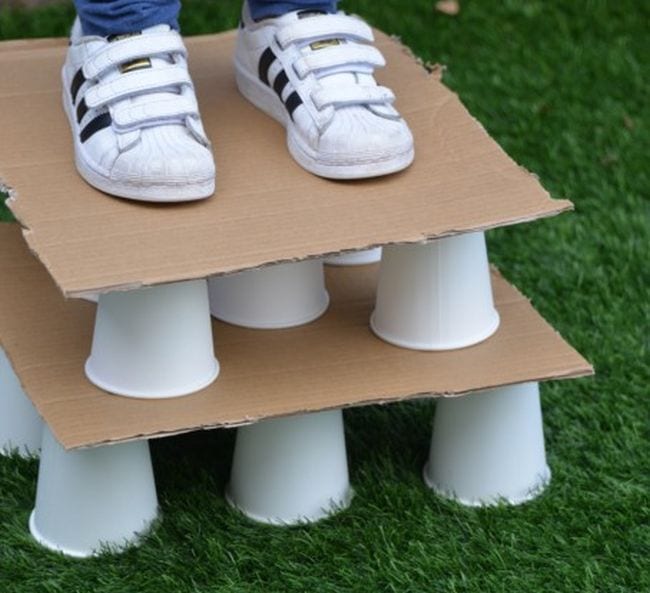
68. Stand on a pile of paper cups
Combine physics and engineering and challenge kids to create a paper cup structure that can support their weight. This is a cool project for aspiring architects.
Learn more: Paper Cup Stack
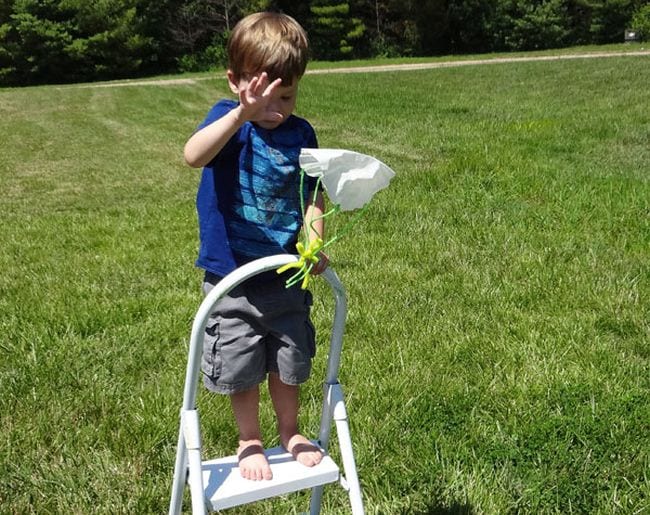
69. Test out parachutes
Gather a variety of materials (try tissues, handkerchiefs, plastic bags, etc.) and see which ones make the best parachutes. You can also find out how they’re affected by windy days or find out which ones work in the rain.
Learn more: How To Make a Parachute
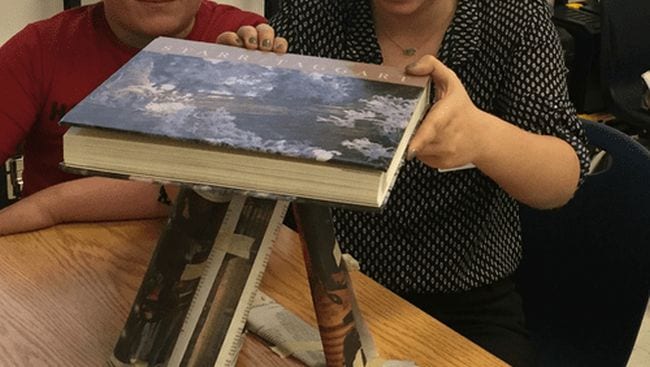
70. Recycle newspapers into an engineering challenge
It’s amazing how a stack of newspapers can spark such creative engineering. Challenge kids to build a tower, support a book, or even build a chair using only newspaper and tape!
Learn more: Newspaper STEM Challenge

71. Use rubber bands to sound out acoustics
Explore the ways that sound waves are affected by what’s around them using a simple rubber-band “guitar.” (Kids absolutely love playing with these!)
Learn more: Sound Experiment
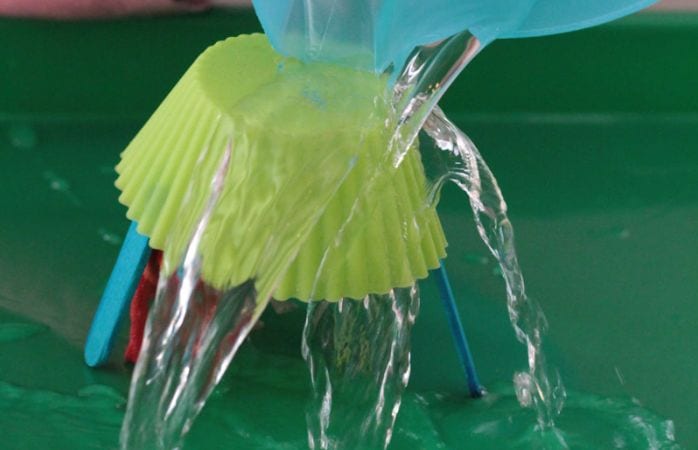
72. Assemble a better umbrella
Challenge students to engineer the best possible umbrella from various household supplies. Encourage them to plan, draw blueprints, and test their creations using the scientific method.
Learn more: Umbrella STEM Challenge
73. Grow rock candy
Turn science into a sweet treat by making rock candy. Dissolve sugar in hot water to create a solution, then let it cool as crystals slowly form on a stick or string. The best part is that the kids get to eat their experiment when it’s done!
74. Create a rain cloud in a jar
Bring weather science indoors with this fun hands-on project. Use shaving cream to mimic clouds and add drops of food coloring to simulate rain. It’s a great way to explore the water cycle without even having to step outside!
75. Brighten up with rainbow celery
Make your science lesson more vibrant with a splash of color. Drop celery stalks into glasses of water with food dye, and watch as the beautiful colors travel up through the stems.
76. Safely view a solar eclipse
Teach your students about the solar eclipse, and help them safely view this exciting event with just a few simple materials.
Learn more: Solar Eclipse Viewer (Guide + Printable Reflection Sheet)
Plus, visit our science hub for everything science for grades K-12!
Sign up for our newsletters to get all the latest learning ideas straight to your inbox., you might also like.
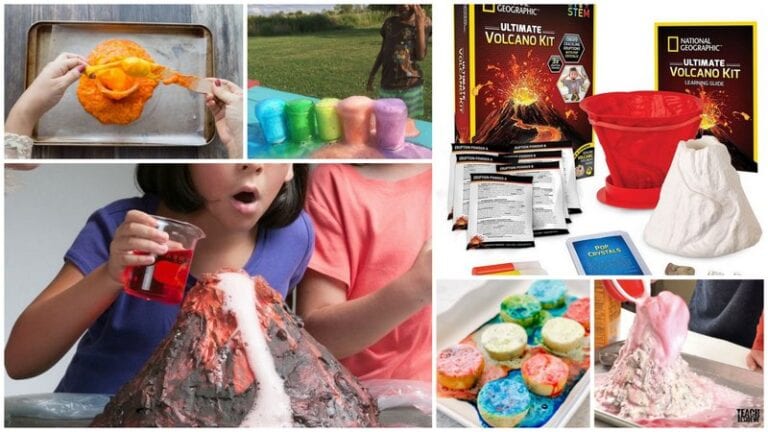
16 Red-Hot Volcano Science Experiments and Kits For Classrooms or Science Fairs
Kids will erupt with excitement! Continue Reading
Copyright © 2024. All rights reserved. 5335 Gate Parkway, Jacksonville, FL 32256
Science Fun
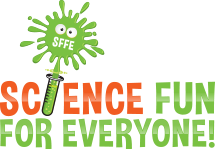
Science Experiments for Kids:
Science experiments you can do at home! Explore an ever growing list of hundreds of fun and easy science experiments. Have fun trying these experiments at home or use them for science fair project ideas. Explore experiments by category, newest experiments, most popular experiments, easy at home experiments, or simply scroll down this page for tons of awesome experiment ideas!
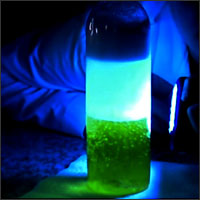
Making A Volcano:
Acids and Bases Can Erupt in Your Faces
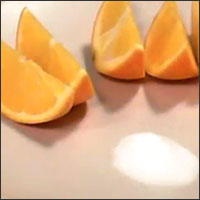
Orange Fizz:
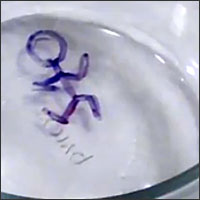
Awesome Experiments:
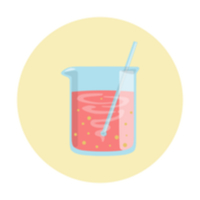
New Experiments:
Check Out Our Newest Experiments

Top Experiments:

Easy Experiments:
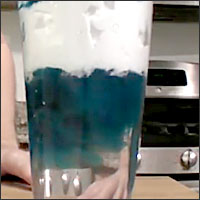
Storm In A Glass:
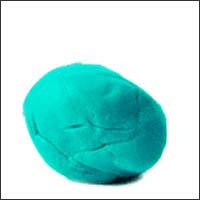
Home Made Play Dough:
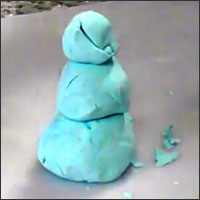
Snow Fluff:
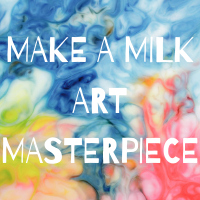
Snow Globe:
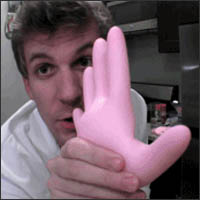
Squishy Turkeys:
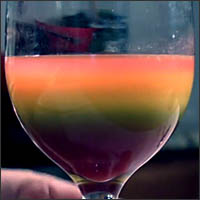
Rainbow in a Glass:
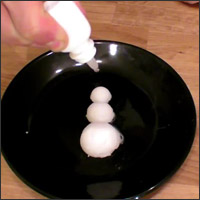
Sizzlin’ Snowballs:
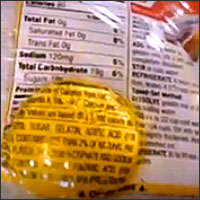
Jello Lenses:
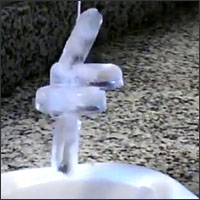
Ice Fishing:
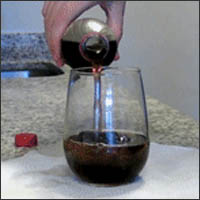
Super Cool Soda:
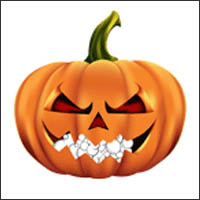
Jack-O-Cano:
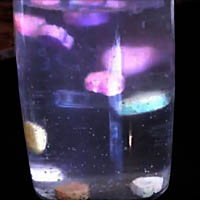
Dancing Hearts:
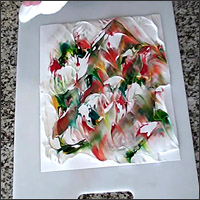
Marbled Gift Wrap:

Massive Expanding Soap:
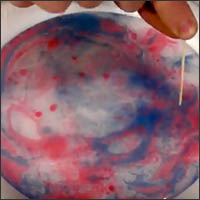
Surface Tension Art:
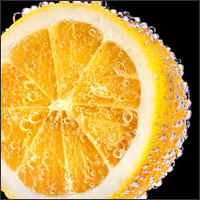
Fizzy Fruit:
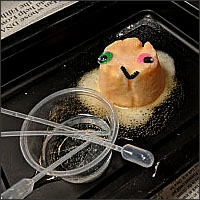
Rotting Pumpkin:

Explode A Bag:
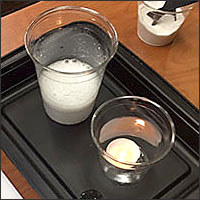
Invisible Extinguisher:
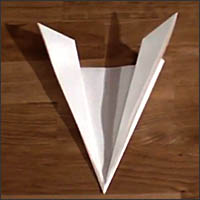
Paper Hovercrafts:
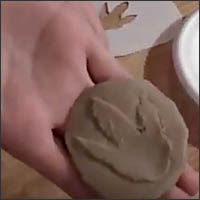
Fun Fossil Stamps:
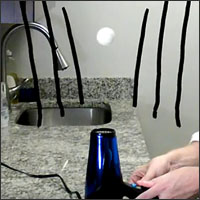
Cool Crystals:
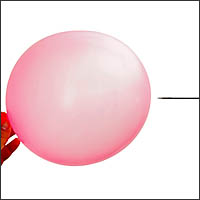
Balloon Pop! Not!
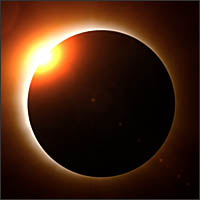
Solar Eclipse Kit:
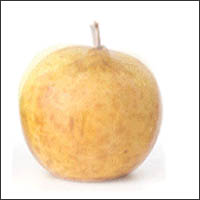
Moldy Apples:
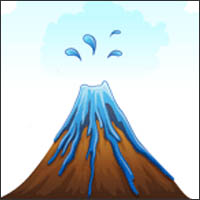
Cool Off Volcanoes:
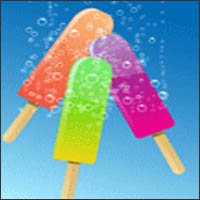
Vinegar Pops:
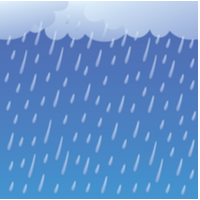
Make It Rain:

Black Light Blue Beverage:
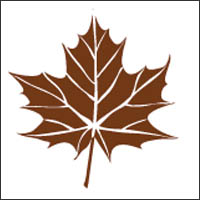
Changing of the Leaves:

Snowflakes:
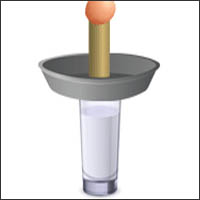
Water Fireworks:
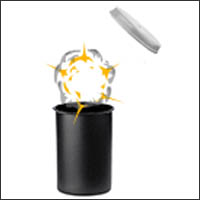
Mind of a Student:
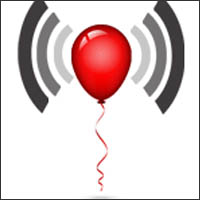
Balloon Speakers:
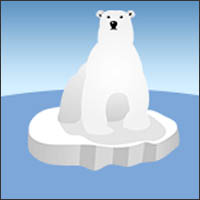
Polar Bear Blubber:
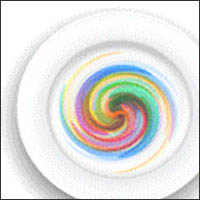
Gorgeous Gooey Gobstoppers:

Olympic Medals:
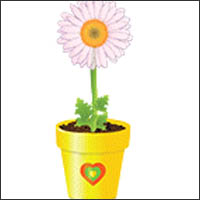
Dyed Flowers:
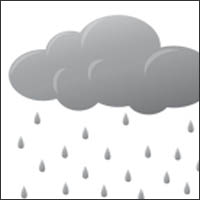
Rain, Rain, Don’t Go Away Gauge:
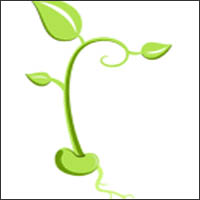
Blossoming Beans:
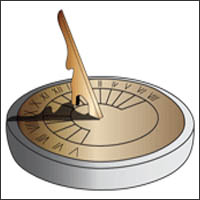
Butter Fingers:
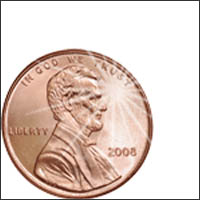
Polishing Pennies:

Dancing Liquid:
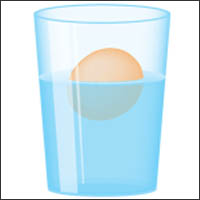
Floating Egg:
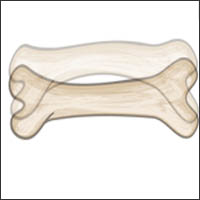
Bendy Bones:
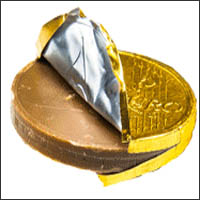
Pot Of Gold:
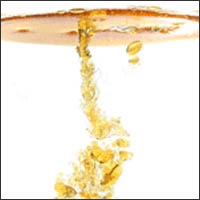
Layers of Liquids:
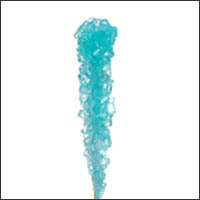
Crystal Candy:
- Activities for Kids
49 Science Experiments for Kids to Try at Home

Looking for science experiments for kids? Thanks to common household ingredients, some ingenuity, and our guide, these at-home science experiments for kids make any day exciting. To help you prepare, we’ve rated each experiment from one to five sponges so you know the messiness factor ahead of time. If you’re looking for seasonal projects, check out these water-themed science experiments . Or how about a few science projects for kids that are perfect for the backyard ?
TIP: Did you know there are a ton of awesome science kits and subscription boxes that will further develop your child’s love of science? KiwiCrate is one of our favorite ed-tech companies, as they offer seriously fun & enriching science & art projects, for kids 0 months up to 13+.
Classic Science Experiments for Kids
Potato battery science experiment.

A lesson in: Chemical to electrical energy
When these nails and copper wires collide, heat is generated (psst ... heat is a result of expended energy, so you can explain to your little runner why he feels warmer after a race around the house). But with some potato magic, the properties of the nail and copper stay separated, allowing the heat to become the electric energy needed to power up your devices. Build your own potato battery with this tutorial from Wiki How .
Messiness factor: One sponge
Make a Baking Soda & Vinegar "Steam" Powered Boat

A lesson in: Chemical reactions
Sure, anyone can do the old baking soda and vinegar volcano, but what about creating a boat that is propelled by this classic chemical reaction ? Keep your little Einsteins busy this afternoon with this cool science project for kids that doesn't require a lot of prep.
Messiness factor: Three sponges
Make Water Float

A lesson in: Air pressure
Can you make water float? We bet you can. No, you don’t need to be a wizard or a witch. You don’t need to cast a spell. There’s nothing magic about it at all, in fact. You can make water float using science. The “trick” to this experiment is air pressure. Get everything you need and the how-to, right here , thanks to Mike Adamick and his book, Dad's Book of Awesome Science Experiments .
Messiness factor: Two sponges
Photo by Mike Adamick. Copyright © 2014 F+W Media, Inc. Used by permission of the publisher. All rights reserved.
Germ Testing Science Project for Kids

A lesson in: Germs
This germ-growing science project for kids will help them understand how even the cleanest-looking surfaces (and hands) can be filled with germs, is one of the easiest science experiments for kids we've found. Get the fun and yucky instructions at Kids Activity Blog .
Make an Edible Water Bottle
View this post on Instagram A post shared by Zar🐴 🦜Travel Fun (@chasing_ice88)
A lesson in: Chemistry and specifically, spherification.
This futuristic science experiment will leave your kids wanting to know more about chemistry. Quench her thirst for knowledge when you create an edible membrane around teaspoons of water to make these handy water “bottles.” The tutorial is in video form over at Inhabitat. Trust us, it’s as cool as it looks!
Messiness factor: One sponge.
Make Crystal Egg Geodes
View this post on Instagram A post shared by STEM Girls | Fun Learning STEM (@brownstemgirls)
A lesson in: Molecular bonding and chemistry.
This grow-your-own experiment lets you grow crystals inside an eggshell. Be sure to get alum powder that contains potassium, or else you won’t get any crystal growth. Adding drops of food dye to the growing solution yields some super cool crystals. A perfectly formed geode takes about 12-15 hours to grow, making this a great weekend project. Get the tutorial for this science experiment for kids at Art and Soul.
Messiness factor: Four sponges.
Check the Iron in Breakfast Cereal
View this post on Instagram A post shared by Kimberly Scott (@kimberlyscottscience)
A lesson in: Magnetism.
You’ve probably seen the label that says “fortified with iron” on your cereal box, but how much iron is actually in your cereal? Is there enough to cause a magnetic reaction? This super easy experiment doesn’t require too many fancy ingredients (cereal + magnet) which means you and the kiddos can try it right away. The results may surprise you! Get the how-to at Rookie Parenting and get started!
Messiness Factor: Two sponges.
Learn About Shooting Stars

A lesson in: Astronomy
With this fun video from They Might Be Giants , kids can learn that shooting stars are not stars, they're meteorites. Then, take it out back for a fun backyard stargazing session. We love this science experiment you can do at home!
Messiness Factor: One sponge
Related: 14 Backyard Science Experiments for Kids
Marshmallow Tower

A lesson in: Engineering
Using only marshmallows and dry spaghetti noodles, kids can experiment with structure, stability, and weight distribution. Get the instructions from Kesler Science by clicking here.
Messiness factor : 1 sponge
Paper Airplane Science

A lesson in: Aerodynamics
By making various paper airplanes , your scientists can test the drag of each plane, which will have an effect on how far they fly. Get more info on this science project for kids here .
Messiness factor: 1 sponge
Walk on Eggs

A lesson in: Weight distribution
How can you walk on eggs without breaking them? Steve Spengler shows us how and teaches an awesome lesson on how an egg’s unique shape gives it tremendous strength, despite its seeming fragility. Check out this easy science experiment for kids to get started.
Messiness factor: 1-3 sponges, depending on the state of the eggs in the end!

A Lesson in: Molecules
Fill a shallow dish with milk, drop food coloring, and make sure the drops don't touch. Then, dip a cotton swab in dish soap and place it in the middle of the dish. The colors will begin to swirl and seem as though they are moving on their own! Explain to your kids that the soap reduces surface tension and makes the fat molecules in the milk move. Click here for more science experiments that use food coloring.
Messiness Factor: 2 sponges
Professor Egghead's Lesson about Light

A Lesson in : Light
Learn all about the sun and what it gives humans (think energy and warmth!) You'll also do an experiment to learn about different kinds of light, even ultraviolet rays. Get the video from Professor Egghead here.
Messiness factor: 1 sponge
Cup Amplifier

A lesson in: Sound
Slide a mobile phone into this low-tech amplifier and the result will be music to your ears. The audio is deeper, richer, and louder, thanks to the science of sound waves and the natural amplification created by the cone-shaped cups. If the two cups look a bit like the attentive ears of a cat or fox, that’s no coincidence. Animal ears use the same science, but in reverse: they help creatures hear by gathering sound waves and directing them into the ear. For engineers, that’s a design worth copying.
Customize your amplifier to fit any size phone!
Tabs cut all around the hold make it easy to glue the cardboard tube in place.
Cut a slot with a flap to support your phone.
What’s Going On The Cup Amplifier focuses and projects sound waves, in the same way that a cheerleader’s megaphone (or even just your cupped hands) amplifies your voice. Once sound waves are created, they want to spread out in all directions. The amplifier directs them from your phone’s speakers into the cardboard cups, where, instead of scattering, they are gathered and channeled in one direction—out the openings.
Excerpted from Cardboard Box Engineering © 2020 by Jonathan Adolph. Used with permission from Storey Publishing.
Skittles Science

A Lesson in: Stratification
A great way to get rid of extra candy, this easy science experiment for kids uses Skittles and whatever liquids you want to use. The idea is, the candy is made of ingredients that dissolve, so kids get a chance to guess which liquid will make the Skittles dissolve the fastest. Get more info over at Little Bins for Little Hands .
Find Out How Many Water Drops Fit on a Coin

A Lesson in: Chemistry
An easy science experiment to do at home is one that helps kids find out what affects the surface tension of water! You'll need basic materials like a penny and a water dropper, and be sure to make a hypothesis before you start. You might be surprised! Get the tutorial from Rookie Parenting .
Pulley Experiment

A Lesson in: Physics
This simple experiment requires a trip to the hardware store, but putting it all together is a cinch. Once you've completed the system, have your kids pick up different-sized rocks and make a note about how difficult it is. Then, try with the pulley. Is it easier or is it harder? To find out how to make your pulley, and for other questions to ask your kids, head over to Little Bins for Little Hands .
Make a Volcano Explode

A Lesson in: Chemical reactions
There's a reason why this science experiment is so popular. When the solid baking soda (sodium bicarbonate—a base) mixes with the liquid vinegar (acetic acid—a weak acid), it creates a gas—carbon dioxide! Besides the chemical reaction, kids enjoy making the actual volcano, whether it's out of clay, mud, or foam sheets. Get a great step-by-step tutorial from The Dad’s Book of Awesome Science Experiments by clicking here .
Messiness Factor: Four sponges
Bake Hygroscopic Cookies

A Lesson in: Hygroscopy.
This simple science experiment is best when you check in on it the next morning. Bake up a batch of cookies, then place them in an airtight container with a piece of fresh bread. Watch as the cookies stay straight-from-the-oven soft thanks to the moisture of the bread (The sugar in the cookies is hygroscopic, which means it absorbs water molecules out of the bread). The best part? Getting to eat the cookies!
The Juice-Tasting Challenge

A lesson in : Taste buds and olfactory senses.
Tummy’s rumbling–it’s time to eat! Did you know that you “eat” with your nose and eyes as well as your mouth? It’s true. Put your family’s sense of smell and sight to the test with this juice-guessing game.
You’ll Need: Masking tape 4 glasses Pen and paper 4 flavors of juice 4 food colorings
How to: 1. Stack a piece of tape on the bottom of each glass and number them one to four, making sure your partner can’t see the numbers. Pour one type of juice into each glass.
2. Send your partner out of the room. Drip a different food coloring into each juice and stir so your partner can’t recognize the juice by its color alone. Record the number, juice type, and color in each glass on a piece of paper.
3. Call your partner back. Tell her to hold her nose, sip from each glass, and guess the juice If she’s like most people, she’ll be kind of confused–her eyes and tongue give her two conflicting flavor messages.
4. Ask her to unplug her nose, close her eyes, and sniff the juice before drinking it. Her guesses should be on target now. All hail the mighty schnoz!
Reprinted from Exploralab: 150+ Ways to Investigate the Amazing Science All Around You .
Messiness factor: One sponge.
Experiment with Tie Dye

A lesson in: Chemistry.
Dyes are fiber reactive, so there's a chemical reaction between the dye and the fabric. You can do this experiment with everything from paper to t-shirts. We've got a great list of tie-dye projects here .
Messiness Factor : Five sponges.
Make a Sundial
View this post on Instagram A post shared by Jennifer Carter (@_thebestkindofchaos_)
Unravel the mysteries of time. Or at least figure out the basics by setting up a sundial outside . Take time each hour to check the sun’s positioning and make note of it so your sidekick can see the bigger picture.
Messiness Factor : One sponge
Dry Ice Bubbles

A lesson in: Gas.
Dry ice is already cool enough on its own, but it takes science to turn them into bubbles. When you add water, it changes the temperature of the dry ice, causing the ice to go from solid to gas. That’s where the fog and bubbles come from! Head to Simply Modern Mom to get the full tutorial. But be careful: Dry ice can cause serious skin burns, so make sure your kids are well-supervised and know not to touch the ice.
Messiness factor: Three sponges.
Invisible Licorice

A lesson in : Light and perspective.
Did the candy melt or disappear? Your sweetums might think it’s magic, but it’s really all about how oil redirects light, causing half the candy to disappear! Click here for the instructions on how to recreate this mind-warping experiment.
Egg in a Bottle
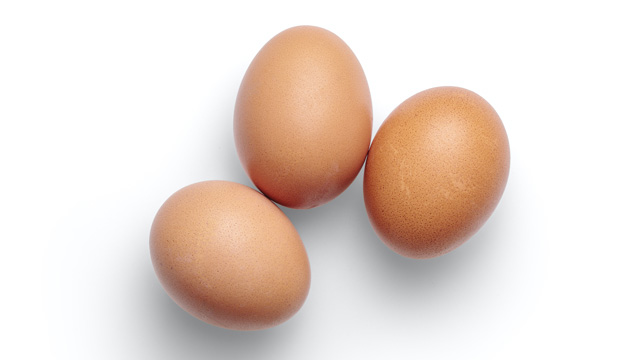
Your whistler has the basics of air pressure down just by using their mouth to blow. And now you can amaze them with this science experiment for kids. There is a little fire play involved (dropping a lit paper into the bottle), but that’s what causes the unbalanced air pressure, which pushes the egg into the bottle. Want to test it out? Head over to Steve Spangler Science for the tutorial.
Invisible Ink

A lesson in: Oxidation.
If your snacker has noticed how their apples have turned brown after being left out for too long, then they’ve seen oxidization in action (loss of electrons and nutrients when in contact with oxygen). Fortunately, lemon juice only oxidizes when in contact with heat. This method works with baking soda and milk too. Click here to find out how to write secret messages with your little spy.
Kid-Safe Lava Lamps

A lesson in: Density and intermolecular polarity.
These sound like big words for our little ones, but there’s an easier way to break it down. Water and oil won’t mix because they’re not the same “weight” or substance (just like clay and LEGOs won’t become one). Now add a drop of food coloring (which is heavier than oil) and a fizzy tablet and watch the air bubbles take coloring with them to the top. Head on over to S. L. Smith’s blog to see how it’s done .
Messiness factor: Two sponges.

A Lesson in: Crystallization.
Be careful: The water only has the power to make the sugar crystals “invisible” when it’s piping hot. After the water cools down and evaporates, the sugar turns back into a solid. And with a little help of your sugar-soaked string, the crystals will find a home to grow upon and become rock candy. Learn how to make your smart sweets with these instructions from the Exploratorium .
S'more Solar Oven

A lesson in: Solar power.
Harness the power of the sun to make your favorite campfire treat! With just a few common household items you can create an eco-friendly oven just for melting marshmallows and chocolate, plus you can teach kids about the power of the sun. Click here to learn how.
Homemade Slime

A lesson in: Polymers.
Is it a liquid or solid? The answer is both! This DIY slime—made from glue, borax, and water—is also known as a polymer (molecules that can stick close together to be a solid or spread apart and take liquid form). And it’s all thanks to borax, which acts as a binder to prevent the glue from going completely liquid. Check out Explorable’s recipe for mixing the ingredients . Prolong the life of your goo by keeping it in an airtight container in the fridge. And, if you need help with cleanup, check out our guide for how to get slime out of clothes, couches, and hair .
Make Fizzy Lemonade

Plain old fresh-squeezed lemonade is so last year. Boost the fun quotient and learn a simple science concept simultaneously when you recreate this edible Fizzy Lemonade drink from Learn With Play at Home . It’s super easy to mix and little sippers report it’s pretty tickly too. A great alternative to the baking soda-vinegar volcano, it shows kids what happens when an acid and base are mixed together.
Whirlpool in a Bottle

A lesson in: physics, weather science.
This easy little experiment doesn't take much: just two empty and clear 2-liter bottles, a metal washer, water and duct tape. Food coloring is optional. Fill one bottle with about two-thirds water. Place the washer on the bottle and line up the empty bottle on top of the water-filled one. Wrap the duct tape around the middle securing the two bottles together. Then, turn the bottles upside down. Does the water go straight down or do you see a mini whirlpool (Swirl the top or bottom a bit for a better effect.)? The spinning water is called a vortex, and all tornadoes, hurricanes and typhoons are examples of air vortexes. Since you’re using water, this is an example of a whirlpool. As the water spins faster, it pushes to the outside of the bottle creating a hole in the middle. The air from the bottom of the bottle comes up the middle and the water from the top flows back down through the hole.
Messiness factor : Two sponges.
Salt Crystal Feathers

A lesson in: Evaporation
You’ve probably tried a salt crystal growing kit at some point in your life (5th grade Science Fair perhaps?) but Schooling a Monkey takes the idea to a new level with these Salt Crystal Feathers. This awe-inspiring project is deceptively simple and inexpensive to achieve, and requires just a wee bit of patience to see the results—kids will love checking in on the progress.
Soda Blasting Experiment

A lesson in: Chemistry, pressure, and release of pressure
This experiment is one you'll definitely want to do outside. Step it up with this Mentos + soda experiment: head to Steve Spangler for all the need-to-know details on this engaging experiment.
Messiness factor: Three (very epic) sponges
Melting Rates

A lesson in: Solar science and absorption
Different colors have different heat-absorbing capacities. Black has the greatest heat-absorbing capacity, which results in ice melting quicker than white, which reflects the most light. Learn how to observe and report on which colors affect ice’s melting rates here on Curiodyssey. Get more sidewalk science ideas here .
Make Elephant Toothpaste

A lesson in: Chemistry and the exothermic process <<<impress your kids!
If you’ve ever wondered how elephants keep their tusks clean, we’ve got the answer. They use elephant toothpaste! Find out how to mix your own and figure out the science behind this dynamic exothermic (heat-releasing) reaction from Fun at Home With Kids . Our favorite part? That you get to throw in some sensory playtime after the action’s over.
Messiness factor: Three sponges. Maybe four.
Bending Water with a Comb

A lesson in: Electrical currents and static electricity
This static electricity science experiment couldn't be any easier. In fact, other than a balloon or going down the slide, it might be the easiest way to teach kids about electrical currents. And, you can impress them with your wizarding skills once before you reveal the science behind it. Click here to get the step-by-step.

Regrow Leftovers

A lesson in : Photosynthesis and plant science.
Insert a little plant science into the mix by re-growing food from scraps. Think onions, potatoes, and lettuce for this one ( psst… green onions are a super easy, fast option). Get the low down on all that recycled goodness at Mrs. Happy Homemaker . Since plants need water and sunlight to grow, exposing scrap roots to that winning combo helps them recharge.
Messiness factor: Two sponges.
Turning Pennies Green

A lesson in: Chemical reactions.
It happens to the Statue of Liberty and it happens to the change in your pocket! Create your own home lab with just a few household ingredients (this experiment will literally cost you just pennies). It’s also a chemical reaction with very non-toxic ingredients, so it’s safe and fascinating even for young kids. Click over to Buggy and Buddy to get the simple how-to.
Film Canister Rocket

A lesson in: Rocket science.
Like the popular baking soda and vinegar experiments, this film canister rocket literally takes it to the next level by using that creation of gas and energy to jet off into the sky. If your explorer has seen videos of mountain tops getting blown off during a volcanic eruption, this science project is pretty much any space lover’s version. Get the building instructions over at The Science Kiddo .
Disappearing Egg Shell

Can you and the kiddos solve the mysterious case of the disappearing eggshell? Following the simple how-to at Go Science Kids , you’ll learn the step-by-step and talking points about the process along the way. Warning! Although it’s totally non-toxic, toddler-aged kids will be tempted to squeeze the egg at the end so make sure it’s a supervised experiment. Visit Go Science Kids to get cracking!
Fishing for Ice
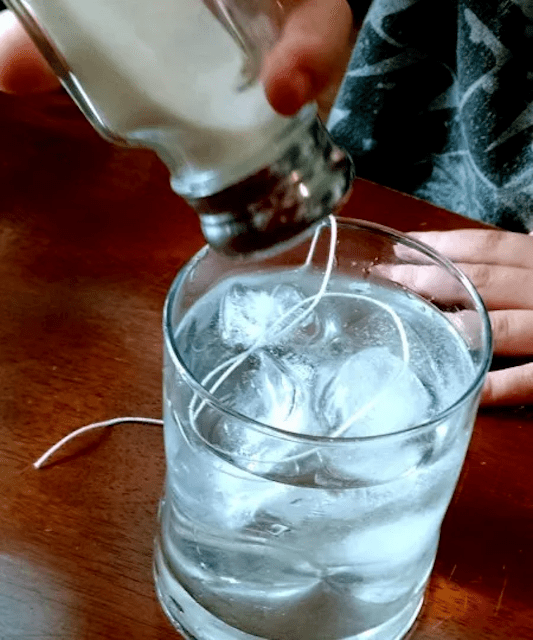
A lesson in: Freezing/temperature.
Children living in snow-covered cities might witness their neighbors salting the driveway. Well, while that is definitely not for fun, this experiment is. Salt lowers the freezing point of ice so it melts, but it won’t be able to freeze unless it’s cold enough. See how The Science Kiddo made a clever game with this knowledge.
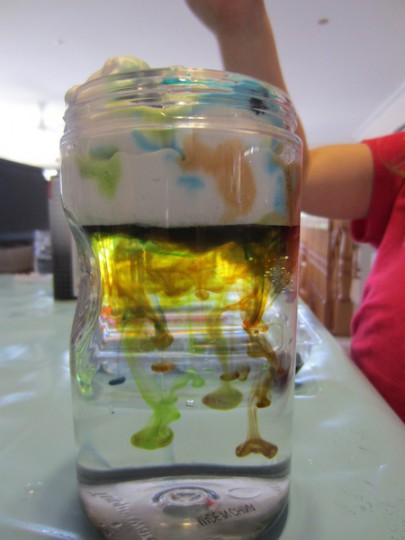
A lesson in: How clouds hold water.
Let your imagineers pretend shaving cream is a cloud that holds colorful raindrops. As they squeeze more and more food coloring, their “cloud” will soon release the excess below—just like how real clouds get too heavy and let the rain loose on a gloomy day. Learn how to re-create this weather experiment here .
Dyed Plants

A lesson in: Capillary action.
Find out how plants “drink” water with some food coloring . Use carnations, roses, or stalks of celery submerged in the colored water and watch the liquid slowly seep through the plant’s “veins” and towards the leaves. Keep an eye out -- you could have a very colorful bouquet just after the first day. Get the rundown by Dad’s Book of Awesome Science Experiments over here .
Dancing Oobleck

A lesson in: Sound waves.
The word “oobleck” comes from a Dr. Seuss story where a young boy must rescue his kingdom from a sticky substance. But the neat part of this experiment is how oobleck reacts to vibrations. Put the oobleck over a subwoofer (on top of a cookie sheet!) and watch it dance to different frequencies. Your dancer will see how sound isn’t just about volume! Check out more of this awesome experiment from Tammy of Housing a Forest .
Messiness factor: Five sponges.
Homemade Lightning

A lesson in: Static electricity. (Or weather science.)
Lightning is essentially electrons moving uber fast between the sky and the earth—and with a few simple materials, you can use homemade static electricity (the reason behind your hair sticking up when you rub a balloon or go through a tunnel slide super fast) for DIY lightning. Figure out how to recreate a family-friendly version of this spark by visiting the activity blog Learn Play Imagine .
Make a Bug Vacuum

A Lesson in: Entomology
Scientists capture bugs for study using a mouth-powered vacuum, called an aspirator or a pooter. Kids can make their own version from a mason jar, then use it to gather ants (or other small insects) and observe them in action.
What you'll need: Pint-size mason jar with a two-piece lid Milk or juice carton Hole punch 2 bendy straws Tape Gauze pad
How to: 1. Open the milk carton along the seams and flatten it out. Use the inner lid of the mason jar as a template to trace a circle on the carton. Cut out the circle and punch two holes in the center about an inch apart.
2. Carefully slide the short ends of the bendy straws into the holes. Tape a piece of gauze pad around the end of one straw to prevent any bugs from getting sucked up.
3 Set the lid on the jar and fasten it in place with the ring.
4. To use your pooter, place the tip of the straw without the gauze near a bug. Put your mouth on the straw with the gauze, and gently suck in. The bug should travel up the straw and land unharmed at the bottom of the jar.
Take It Further Capture some ants in your bug vacuum, then use a magnifying glass to observe these remarkable insects up close. Open the jar and feed them a few drops of sugary water or corn syrup, or try giving them some birdseed. Ants live in colonies headed by a queen ant, and they can’t last long on their own. When you are done observing them, release your ants where you found them. (Note: Some ants bite, so be careful handling them.)
Tell Me More Ants were the Earth’s first farmers. For millions of years, certain species have been creating underground gardens where they grow their favorite fungus for food. They tend to their crops, bringing them water and even weeding out other fungi they don’t want.
Excerpted from Mason Jar Science © by Jonathan Adolph, used with permission from Storey Publishing . Available online , $12.69.
Messiness Factor : One sponge.
A Smell Challenge

A Lesson in: Olfactory senses.
Teach kids the importance of smell with this activity that asks them to use only their noses to identify objects. Can they sniff out the fish oil over the garlic cloves? The lemon juice over the orange oil? Homeschooling blogger Ana has the instructions at Babble Dabble Do .
Is This Soluble?

A Lesson in: Mixtures
Teaching children chemistry can become a fun, at-home activity as a weekend afternoon project or as part of their remote learning curriculum. One of the best experiments you can do is the mixing activity. With this exercise, children will learn the difference between soluble and insoluble substances. Do not worry! You can do it with ingredients you already have in your kitchen!
Ingredients
- Oil (cooking oil, vegetable oil, olive oil, etc.)
- Food Coloring
- Transparent containers with a lid or transparent cups with a spoon to mix
Before you begin the activity, ask the children what each ingredient is—whether it is a solid, liquid, or gas—and what they think will happen when you begin mixing them. This guarantees a hands-on experiment that will allow the children to feel they are in control.
- Mix the water and the sand. Children will notice there is a separation between both ingredients and that layers have formed, so it is an insoluble reaction.
- Mix the water and the food coloring. Children will see them combine—the water turning into that color—and know it is a soluble reaction.
- Mix the water and the table salt. The salt will disappear in the water, making it another soluble reaction.
- Mix the water and the oil. This time, a clear layer will be formed, showing another insoluble reaction.
After these mixing activities, you can further this experiment by letting the children find other ingredients to mix with water and have them determine if that substance is soluble or insoluble. The main goal is to show them different reactions and layers.
For a clear example of this experiment, check out this video .
Messiness factor: 2 sponges
Experiment courtesy of Dr. Stephanie Ryan. See more fun about science over at letslearnaboutscience.com
Need some fresh ideas?
Subscribe to our weekly newsletter for expert parenting tips and simple solutions that make life instantly better.
By subscribing you agree to Tinybeans Terms and Privacy Policy
Related reads

Why Are Gen Z Kids Covering Their Noses in Family Photos?

Screen Time for Babies Linked to Sensory Differences in Toddlerhood, Study Shows

Kids Shouldn’t Have to Finish Dinner to Get Dessert, Dietitian Explains

The Questions Parents Should Be Asking Their Pediatrician—but Aren’t

6 Better Phrases to Say Instead of ‘Be Careful’ When Kids Are Taking Risks
- your daily dose

- and connection

- Your daily dose

Cool Science Experiments Headquarters
Making Science Fun, Easy to Teach and Exciting to Learn!
Science Experiments
35 Easy Science Experiments You Can Do Today!
Looking for easy science experiments to do at home or in the classroom? You’re in luck because we’ve got over 35 easy science activities for kids that will help you make science fun for all ages.
Most of these simple science experiments for kids are easy to prepare, quick to perform, and use household items or inexpensive materials you can find almost anywhere. To connect the fun to the “why it works” you’ll find an easy to teach explanation with every experiment!
Musical Jars Science Experiment

This super easy experiment is simple as it is fun! Kids make their own musical instruments with clear jars and water then investigate sound waves, pitch, and more.
When the experiment is complete, use the colorful new “instrument” for a fun music lesson. Kids can play and take turns to “name that tune”!
Detailed Instructions & Video Tutorial -> Musical Jars Science Experiment
Viscosity of Liquids Science Experiment

Viscosity may be a confusing term for kids at first, but this super easy experiment can help them see viscosity in action!
With marbles, clear jars, and a few household materials, kids will make predictions, record data, and compare the results while they test high and low density liquids.
Detailed Instructions & Video Tutorial -> Viscosity Science Experiment
Floating Egg Science Experiment
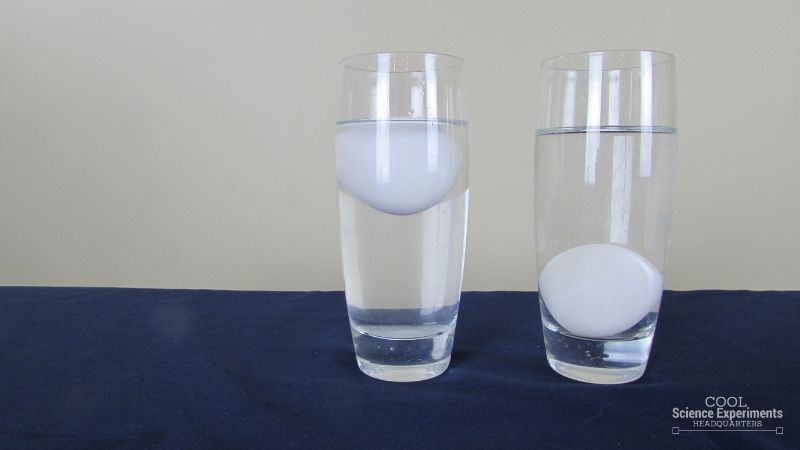
Can a solid egg float? Kids can find the answer and understand why with this quick science experiment.
Discover just how easy it can be to make a raw egg float while testing the laws of density. We’ve included additional ideas to try so kids can make predictions and test the concept further.
Detailed Instructions & Video Tutorial -> Floating Egg Science Experiment
Paper Towel Dry Under Water Experiment

Is it possible to keep a paper towel dry even when submerging it under water? The answer is a surprising “yes,” if you use science to help!
Start with the properties of your materials, make a prediction, then explore matter, density, volume, and more.
Detailed Instructions & Video Tutorial -> Paper Towel Dry Under Water Experiment
Mixing Oil & Water Science Experiment

This simple experiment for kids helps them better understand density and the changes that happen when adding an emulsifier to the mix.
Detailed Instructions & Video Tutorial -> Mixing Oil & Water Experiment
Will it Float or Sink Science Experiment
Will it sink or will it float? This fun experiment challenges what students think they know about household items!
Students record their hypothesis for each item then test it to compare what they think will happen against their observations.
Detailed Instructions & Video Tutorial -> Float or Sink Science Experiment
Water Temperature Science Experiment

What does thermal energy look like? In this easy science experiment, kids are able to see thermal energy as they explore the concept in action.
With clear jars and food coloring, students can quickly see how molecules move differently through hot and cold water.
Detailed Instructions & Video Tutorial -> Water Temperature Science Experiment
Balloon Blow-up Science Experiment

Kids will discover how matter reacts when heated and cooled as they watch with surprise as baking soda and vinegar blow the balloon up before their eyes.
Detailed Instructions & Video Tutorial -> Balloon Blow-up Science Experiment
Floating Ping Pong Ball Science Experiment

Kids will giggle with joy with this super easy experiment. With only a ping pong ball and a hair dryer, students will have a great time while exploring Bernoulli’s Principle in action.
We’ve included additional ideas to further explore the concept with different objects and observe the change in results.
Detailed Instructions & Video Tutorial -> Floating Ping Pong Ball Science Experiment
Hair Stand on End Science Experiment

It’s especially fun for those who’ve never seen static electricity in action before!
Detailed Instructions & Video Tutorial -> Hair Stand on End Science Experiment
Oil Bubbles in Water Science Experiment

Kids explore density and experience some chemistry when creating oil bubbles in water with everyday household items.
This experiment is particularly fun when kids see that they’ve made what looks like a lava lamp!
Detailed Instructions & Video Tutorial -> Oil Bubbles in Water Science Experiment
Color Changing Water Science Experiment

Kids will be surprised as they watch a new color being “created” without mixing! Using only a clear bowl and glass, some food coloring, and water, this super easy science experiment is quick and easy with a huge wow factor.
Try it with yellow and blue to follow along with our demonstration video then try different primary color combinations and explore the results.
Detailed Instructions & Video Tutorial -> Color Changing Water Science Experiment
Magnetic Paper Clip Chain Science Experiment

It may seem a bit like magic but it’s actually science! It’s not hard to capture your kids’ attention with this quick and easy science experiment as they watch paper clips “stick” together and form a chain!
Perfect for younger children, the experiment only takes a few minutes and is a fun way to explore the concept of magnetic transference.
Detailed Instructions & Video Tutorial -> Magnetic Paper Clip Chain Science Experiment
Is it Magnetic Science Experiment
With only a magnet and a few household items, kids will make and record their predictions, test and observe, then compare what they think is magnetic against the results.
Simple and quick, but some of the results may surprise your students!
Cloud in a Jar Experiment

This simple experiment only requires a few materials but really holds student attention as a cloud forms before their eyes!
Kids will learn new weather vocabulary as they explore how physical changes and reactions happen as clouds begin to take form. We’ve also included a helpful chart on the types of clouds.
Detailed Instructions & Video Tutorial -> Cloud in a Jar Science Experiment
Magic Milk Science Experiment

Create a dancing rainbow of colors with this easy science experiment for kids!
Using only a few ordinary kitchen items, your students can create a color explosion in ordinary milk when they add our special ingredient. (Hint: The special ingredient (soap!) includes hydrophilic and hydrophobic molecules that make the magic happen!)
Detailed Instructions & Video Tutorial -> Magic Milk Science Experiment
Walking Water Science Experiment

Water can’t really walk upwards against gravity, but this cool science experiment makes it seem like it can!
Kids are able to see the capillary action process and learn how attraction and adhesive forces in action allow water to move out of one glass into another.
Detailed Instructions & Video Tutorial -> Walking Water Science Experiment
Light Refraction Science Experiment

The results of this easy science experiment are so amazing, it makes kids (and adults) think it must be magic!
Young scientists watch in surprise while they see an arrow change directions instantly. Investigating refraction couldn’t be more fun!
Detailed Instructions & Video Tutorial -> Light Refraction Science Experiment
Dancing Raisins Experiment

Learn about the reactions of buoyancy and density in this simple science activity for kids.
They may not need dancing shoes, but give them a glass of soda pop and the raisins in this fun experiment love to dance!
Detailed Instructions & Video Tutorial -> Dancing Raisins Science Experiment
See Sound Experiment

Kids love this experiment because they are encouraged to drum loudly so they can “see” sound waves in action!
Detailed Instructions & Video Tutorial -> See Sound Science Experiment
Elephant Toothpaste Science Experiment

Grab some giant brushes and get ready to make elephant toothpaste! Although you might not be able to get an elephant excited by this super easy experiment, kids love it!
The impressive and quick results created by the chemical reaction and the heat released in the process makes an abundant amount of fun and colorful foam!
Detailed Instructions & Video Tutorial -> Elephant Toothpaste Science Experiment
Upside Down Glass of Water Science Experiment

We all know what happens when we turn a glass of water upside down, but what if I told you you can do it without the water spilling out?
The experiment only requires a few common items and you’ll be amazed by the results of air pressure in action!
Detailed Instructions & Video Tutorial -> Upside Down Glass of Water Science Experiment
Pick up Ball with a Jar Science Experiment

It almost seems like magic but with the help of science, you can pick up a ball with an open jar!
Instead of magic, this easy science activity uses centripetal force and practice to do what seems like the impossible.
Detailed Instructions & Video Tutorial -> Pick up Ball with a Jar Experiment
Will It Melt Science Experiment
Can you guess which items will melt? This easy outside experiment challenges what students think they know about the effects of the sun.
Pepper Move Science Experiment

Can you make pepper move and zoom away with just a light touch of your finger? With science you can!
This experiment only takes a few quick minutes from beginning to end, but the reaction caused by surface tension makes kids want to do it over and over.
Detailed Instructions & Video Tutorial -> Pepper Move Science Experiment
Crush a Plastic Bottle Science Experiment

Go for it, crush that bottle, but don’t touch it! Although it usually can’t be seen or touched, air pressure is pushing against all surfaces at all times.
With this easy science activity kids can see air pressure at work when they watch a bottle crushes itself!
Detailed Instructions & Video Tutorial -> Crush a Plastic Bottle Science Experiment
Egg in Vinegar Science Experiment

This vinegar science experiment will have your eggs and kids bouncing (with excitement!) before you know it!
Kids can watch and explore the results of chemical reactions as the egg changes from something that seems solid into what feels like something bouncy!
Detailed Instructions & Video Tutorial -> Egg in Vinegar Science Experiment
Straw Through a Potato Science Experiment

Can you make a normal plastic straw go into a raw, solid potato? It seems like something impossible, but science can easily make it possible!
Pick your potatoes then let kids try their strength as they explore air pressure with this super easy experiment.
Detailed Instructions & Video Tutorial -> Straw Through a Potato Science Experiment
Rainbow in a Jar Science Experiment

With only a few household items, they’ll explore mass, volume, and density with every color layer!
Detailed Instructions & Video Tutorial -> Rainbow in a Jar Experiment
Tornado in a Bottle Science Experiment

Kids can have fun while learning more about centripetal force with this fun experiment.
With a little muscle and science, kids watch with amazement as they create their own glitter cyclone in a bottle as the centripetal force vortex appears.
Detailed Instructions & Video Tutorial -> Tornado in a Bottle Science Experiment
Why Doesn’t the Water Leak Science Experiment

Can you poke holes in a plastic bag full of water without the water leaking out? With this super easy science activity you can!
Kids are stunned as they learn about polymers and how they can do what seems to be impossible.
Detailed Instructions & Video Tutorial -> Why Doesn’t the Water Leak Science Experiment
Use a Bottle to Blow-up a Balloon Experiment

Is it possible to blow up a balloon with only water and science?
In this super easy experiment, kids learn more about how matter behaves as they watch a balloon inflate and deflate as a result of matter being heated and cooled.
Detailed Instructions & Video Tutorial -> Use a Bottle to Blow-up a Balloon Experiment
Orange Float Science Experiment

Kids explore buoyancy as they learn about and test density in this sink or float science activity.
While it only takes a few minutes, this super easy experiment invites kids to predict what they think will happen then discuss why the heavier orange floats!
Detailed Instructions & Video Tutorial -> Orange Float Science Experiment
Pick up Ice with String Science Experiment

With only a few household items, kids learn about freezing temperatures and the results they create in saltwater versus freshwater.
Detailed Instructions & Video Tutorial -> Pick Up Ice with String Science Experiment
Color Changing Walking Water Experiment

Using the concepts explored in our popular Walking Water Science Experiment, kids will see color walk from one glass to another and change colors as it goes!
The quick experiment seems to defy gravity like magic, but don’t worry, kids can find out how science makes it work!
Detailed Instructions & Video Tutorial -> Color Changing Walking Water Experiment
Reader Interactions
Leave a reply cancel reply.
Your email address will not be published. Required fields are marked *
Save my name, email, and website in this browser for the next time I comment.

- Privacy Policy
- Disclosure Policy
Copyright © 2024 · Cool Science Experiments HQ
Science Bob
Experiments.
- Science Fair Ideas
- Science Q&A
- Research Help
- Experiment Blog
WHY NOT TRY A FUN SCIENCE EXPERIMENT RIGHT NOW?
Here’s list of great science experiments with instructions that you can do right at home or at school. In order for your science experiment to be safe and successful, be sure to:
- Get your parent’s or teacher’s permission, and their help
- Follow the directions as written
Building a Hovercraft – Video
The egg drop challenge, make ice cream in a plastic bag, build a hovercraft you can ride, eggshell geode crystals, build a soap powered model boat, a density experiment you can drink, make your own rock candy, build a fizz inflator, make a levitating orb, blobs in a bottle, fantastic foamy fountain, build a film canister rocket, the exploding lunch bag, make your own volcano, bend water with static electricity, a color symphony, make a paperclip float, blow up a balloon with yeast, how to make slime – method 1, see some optical illusions, make an electromagnet, try some lava in a cup, make a balloon rocket.

ADS (these ads support our free website)
Share this page.

Choose Your Test
- Search Blogs By Category
- College Admissions
- AP and IB Exams
- GPA and Coursework
37 Cool Science Experiments for Kids to Do at Home
General Education
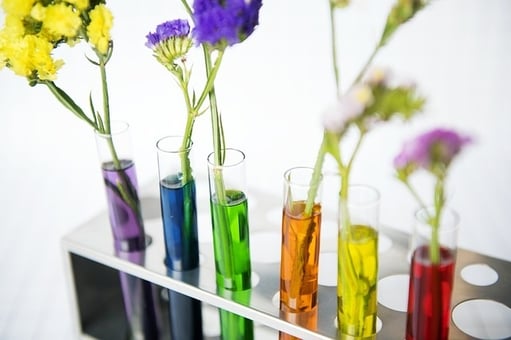
Are you looking for cool science experiments for kids at home or for class? We've got you covered! We've compiled a list of 37 of the best science experiments for kids that cover areas of science ranging from outer space to dinosaurs to chemical reactions. By doing these easy science experiments, kids will make their own blubber and see how polar bears stay warm, make a rain cloud in a jar to observe how weather changes, create a potato battery that'll really power a lightbulb, and more.
Below are 37 of the best science projects for kids to try. For each one we include a description of the experiment, which area(s) of science it teaches kids about, how difficult it is (easy/medium/hard), how messy it is (low/medium/high), and the materials you need to do the project. Note that experiments labelled "hard" are definitely still doable; they just require more materials or time than most of these other science experiments for kids.
#1: Insect Hotels
- Teaches Kids About: Zoology
- Difficulty Level: Medium
- Messiness Level: Medium
Insect hotels can be as simple (just a few sticks wrapped in a bundle) or as elaborate as you'd like, and they're a great way for kids to get creative making the hotel and then get rewarded by seeing who has moved into the home they built. After creating a hotel with hiding places for bugs, place it outside (near a garden is often a good spot), wait a few days, then check it to see who has occupied the "rooms." You can also use a bug ID book or app to try and identify the visitors.
- Materials Needed
- Shadow box or other box with multiple compartments
- Hot glue gun with glue
- Sticks, bark, small rocks, dried leaves, bits of yarn/wool, etc.

#2: DIY Lava Lamp
- Teaches Kids About: Chemical reactions
- Difficulty Level: Easy
In this quick and fun science experiment, kids will mix water, oil, food coloring, and antacid tablets to create their own (temporary) lava lamp . Oil and water don't mix easily, and the antacid tablets will cause the oil to form little globules that are dyed by the food coloring. Just add the ingredients together and you'll end up with a homemade lava lamp!
- Vegetable oil
- Food coloring
- Antacid tablets
#3: Magnetic Slime
- Teaches Kids About: Magnets
- Messiness Level: High (The slime is black and will slightly dye your fingers when you play with it, but it washes off easily.)
A step up from silly putty and Play-Doh, magnetic slime is fun to play with but also teaches kids about magnets and how they attract and repel each other. Some of the ingredients you aren't likely to have around the house, but they can all be purchased online. After mixing the ingredients together, you can use the neodymium magnet (regular magnets won't be strong enough) to make the magnetic slime move without touching it!
- Liquid starch
- Adhesive glue
- Iron oxide powder
- Neodymium (rare earth) magnet
#4: Baking Soda Volcanoes
- Teaches Kids About: Chemical reactions, earth science
- Difficulty Level: Easy-medium
- Messiness Level: High
Baking soda volcanoes are one of the classic science projects for kids, and they're also one of the most popular. It's hard to top the excitement of a volcano erupting inside your home. This experiment can also be as simple or in-depth as you like. For the eruption, all you need is baking soda and vinegar (dishwashing detergent adds some extra power to the eruption), but you can make the "volcano" as elaborate and lifelike as you wish.
- Baking soda
- Dishwashing detergent
- Large mason jar or soda bottle
- Playdough or aluminum foil to make the "volcano"
- Additional items to place around the volcano (optional)
- Food coloring (optional)
#5: Tornado in a Jar
- Teaches Kids About: Weather
- Messiness Level: Low
This is one of the quick and easy and science experiments for kids to teach them about weather. It only takes about five minutes and a few materials to set up, but once you have it ready you and your kids can create your own miniature tornado whose vortex you can see and the strength of which you can change depending on how quickly you swirl the jar.
- Glitter (optional)
#6: Colored Celery Experiment
- Teaches Kids About: Plants
This celery science experiment is another classic science experiment that parents and teachers like because it's easy to do and gives kids a great visual understanding of how transpiration works and how plants get water and nutrients. Just place celery stalks in cups of colored water, wait at least a day, and you'll see the celery leaves take on the color of the water. This happens because celery stalks (like other plants) contain small capillaries that they use to transport water and nutrients throughout the plant.
- Celery stalks (can also use white flowers or pale-colored cabbage)
#7: Rain Cloud in a Jar
This experiment teaches kids about weather and lets them learn how clouds form by making their own rain cloud . This is definitely a science project that requires adult supervision since it uses boiling water as one of the ingredients, but once you pour the water into a glass jar, the experiment is fast and easy, and you'll be rewarded with a little cloud forming in the jar due to condensation.
- Glass jar with a lid
- Boiling water
- Aerosol hairspray

#8: Edible Rock Candy
- Teaches Kids About: Crystal formation
It takes about a week for the crystals of this rock candy experiment to form, but once they have you'll be able to eat the results! After creating a sugar solution, you'll fill jars with it and dangle strings in them that'll slowly become covered with the crystals. This experiment involves heating and pouring boiling water, so adult supervision is necessary, once that step is complete, even very young kids will be excited to watch crystals slowly form.
- Large saucepan
- Clothespins
- String or small skewers
- Candy flavoring (optional)
#9: Water Xylophone
- Teaches Kids About: Sound waves
With just some basic materials you can create your own musical instrument to teach kids about sound waves. In this water xylophone experiment , you'll fill glass jars with varying levels of water. Once they're all lined up, kids can hit the sides with wooden sticks and see how the itch differs depending on how much water is in the jar (more water=lower pitch, less water=higher pitch). This is because sound waves travel differently depending on how full the jars are with water.
- Wooden sticks/skewers
#10: Blood Model in a Jar
- Teaches Kids About: Human biology
This blood model experiment is a great way to get kids to visual what their blood looks like and how complicated it really is. Each ingredient represents a different component of blood (plasma, platelets, red blood cells, etc.), so you just add a certain amount of each to the jar, swirl it around a bit, and you have a model of what your blood looks like.
- Empty jar or bottle
- Red cinnamon candies
- Marshmallows or dry white lima beans
- White sprinkles
#11: Potato Battery
- Teaches Kids About: Electricity
- Difficulty Level: Hard
Did you know that a simple potato can produce enough energy to keep a light bulb lit for over a month? You can create a simple potato battery to show kids. There are kits that provide all the necessary materials and how to set it up, but if you don't purchase one of these it can be a bit trickier to gather everything you need and assemble it correctly. Once it's set though, you'll have your own farm grown battery!
- Fresh potato
- Galvanized nail
- Copper coin

#12: Homemade Pulley
- Teaches Kids About: Simple machines
This science activity requires some materials you may not already have, but once you've gotten them, the homemade pulley takes only a few minutes to set up, and you can leave the pulley up for your kids to play with all year round. This pulley is best set up outside, but can also be done indoors.
- Clothesline
- 2 clothesline pulleys
#13: Light Refraction
- Teaches Kids About: Light
This light refraction experiment takes only a few minutes to set up and uses basic materials, but it's a great way to show kids how light travels. You'll draw two arrows on a sticky note, stick it to the wall, then fill a clear water bottle with water. As you move the water bottle in front of the arrows, the arrows will appear to change the direction they're pointing. This is because of the refraction that occurs when light passes through materials like water and plastic.
- Sticky note
- Transparent water bottle
#14: Nature Journaling
- Teaches Kids About: Ecology, scientific observation
A nature journal is a great way to encourage kids to be creative and really pay attention to what's going on around them. All you need is a blank journal (you can buy one or make your own) along with something to write with. Then just go outside and encourage your children to write or draw what they notice. This could include descriptions of animals they see, tracings of leaves, a drawing of a beautiful flower, etc. Encourage your kids to ask questions about what they observe (Why do birds need to build nests? Why is this flower so brightly colored?) and explain to them that scientists collect research by doing exactly what they're doing now.
- Blank journal or notebook
- Pens/pencils/crayons/markers
- Tape or glue for adding items to the journal
#15: DIY Solar Oven
- Teaches Kids About: Solar energy
This homemade solar oven definitely requires some adult help to set up, but after it's ready you'll have your own mini oven that uses energy from the sun to make s'mores or melt cheese on pizza. While the food is cooking, you can explain to kids how the oven uses the sun's rays to heat the food.
- Aluminum foil
- Knife or box cutter
- Permanent marker
- Plastic cling wrap
- Black construction paper

#16: Animal Blubber Simulation
- Teaches Kids About: Ecology, zoology
If your kids are curious about how animals like polar bears and seals stay warm in polar climates, you can go beyond just explaining it to them; you can actually have them make some of their own blubber and test it out. After you've filled up a large bowl with ice water and let it sit for a few minutes to get really cold, have your kids dip a bare hand in and see how many seconds they can last before their hand gets too cold. Next, coat one of their fingers in shortening and repeat the experiment. Your child will notice that, with the shortening acting like a protective layer of blubber, they don't feel the cold water nearly as much.
- Bowl of ice water
#17: Static Electricity Butterfly
This experiment is a great way for young kids to learn about static electricity, and it's more fun and visual than just having them rub balloons against their heads. First you'll create a butterfly, using thick paper (such as cardstock) for the body and tissue paper for the wings. Then, blow up the balloon, have the kids rub it against their head for a few seconds, then move the balloon to just above the butterfly's wings. The wings will move towards the balloon due to static electricity, and it'll look like the butterfly is flying.
- Tissue paper
- Thick paper
- Glue stick/glue
#18: Edible Double Helix
- Teaches Kids About: Genetics
If your kids are learning about genetics, you can do this edible double helix craft to show them how DNA is formed, what its different parts are, and what it looks like. The licorice will form the sides or backbone of the DNA and each color of marshmallow will represent one of the four chemical bases. Kids will be able to see that only certain chemical bases pair with each other.
- 2 pieces of licorice
- 12 toothpicks
- Small marshmallows in 4 colors (9 of each color)
- 5 paperclips
#19: Leak-Proof Bag
- Teaches Kids About: Molecules, plastics
This is an easy experiment that'll appeal to kids of a variety of ages. Just take a zip-lock bag, fill it about ⅔ of the way with water, and close the top. Next, poke a few sharp objects (like bamboo skewers or sharp pencils) through one end and out the other. At this point you may want to dangle the bag above your child's head, but no need to worry about spills because the bag won't leak? Why not? It's because the plastic used to make zip-lock bags is made of polymers, or long chains of molecules that'll quickly join back together when they're forced apart.
- Zip-lock bags
- Objects with sharp ends (pencils, bamboo skewers, etc.)
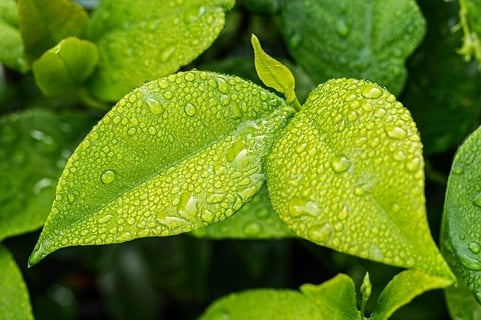
#20: How Do Leaves Breathe?
- Teaches Kids About: Plant science
It takes a few hours to see the results of this leaf experiment , but it couldn't be easier to set up, and kids will love to see a leaf actually "breathing." Just get a large-ish leaf, place it in a bowl (glass works best so you can see everything) filled with water, place a small rock on the leaf to weigh it down, and leave it somewhere sunny. Come back in a few hours and you'll see little bubbles in the water created when the leaf releases the oxygen it created during photosynthesis.
- Large bowl (preferably glass)
- Magnifying glass (optional)
#21: Popsicle Stick Catapults
Kids will love shooting pom poms out of these homemade popsicle stick catapults . After assembling the catapults out of popsicle sticks, rubber bands, and plastic spoons, they're ready to launch pom poms or other lightweight objects. To teach kids about simple machines, you can ask them about how they think the catapults work, what they should do to make the pom poms go a farther/shorter distance, and how the catapult could be made more powerful.
- Popsicle sticks
- Rubber bands
- Plastic spoons
- Paint (optional)
#22: Elephant Toothpaste
You won't want to do this experiment near anything that's difficult to clean (outside may be best), but kids will love seeing this " elephant toothpaste " crazily overflowing the bottle and oozing everywhere. Pour the hydrogen peroxide, food coloring, and dishwashing soap into the bottle, and in the cup mix the yeast packet with some warm water for about 30 seconds. Then, add the yeast mixture to the bottle, stand back, and watch the solution become a massive foamy mixture that pours out of the bottle! The "toothpaste" is formed when the yeast removed the oxygen bubbles from the hydrogen peroxide which created foam. This is an exothermic reaction, and it creates heat as well as foam (you can have kids notice that the bottle became warm as the reaction occurred).
- Clean 16-oz soda bottle
- 6% solution of hydrogen peroxide
- 1 packet of dry yeast
- Dishwashing soap
#23: How Do Penguins Stay Dry?
Penguins, and many other birds, have special oil-producing glands that coat their feathers with a protective layer that causes water to slide right off them, keeping them warm and dry. You can demonstrate this to kids with this penguin craft by having them color a picture of a penguin with crayons, then spraying the picture with water. The wax from the crayons will have created a protective layer like the oil actual birds coat themselves with, and the paper won't absorb the water.
- Penguin image (included in link)
- Spray bottle
- Blue food coloring (optional)

#24: Rock Weathering Experiment
- Teaches Kids About: Geology
This mechanical weathering experiment teaches kids why and how rocks break down or erode. Take two pieces of clay, form them into balls, and wrap them in plastic wrap. Then, leave one out while placing the other in the freezer overnight. The next day, unwrap and compare them. You can repeat freezing the one piece of clay every night for several days to see how much more cracked and weathered it gets than the piece of clay that wasn't frozen. It may even begin to crumble. This weathering also happens to rocks when they are subjected to extreme temperatures, and it's one of the causes of erosion.
- Plastic wrap
#25: Saltwater Density
- Teaches Kids About: Water density
For this saltwater density experiment , you'll fill four clear glasses with water, then add salt to one glass, sugar to one glass, and baking soda to one glass, leaving one glass with just water. Then, float small plastic pieces or grapes in each of the glasses and observe whether they float or not. Saltwater is denser than freshwater, which means some objects may float in saltwater that would sink in freshwater. You can use this experiment to teach kids about the ocean and other bodies of saltwater, such as the Dead Sea, which is so salty people can easily float on top of it.
- Four clear glasses
- Lightweight plastic objects or small grapes
#26: Starburst Rock Cycle
With just a package of Starbursts and a few other materials, you can create models of each of the three rock types: igneous, sedimentary, and metamorphic. Sedimentary "rocks" will be created by pressing thin layers of Starbursts together, metamorphic by heating and pressing Starbursts, and igneous by applying high levels of heat to the Starbursts. Kids will learn how different types of rocks are forms and how the three rock types look different from each other.
- Toaster oven
#27: Inertia Wagon Experiment
- Teaches Kids About: Inertia
This simple experiment teaches kids about inertia (as well as the importance of seatbelts!). Take a small wagon, fill it with a tall stack of books, then have one of your children pull it around then stop abruptly. They won't be able to suddenly stop the wagon without the stack of books falling. You can have the kids predict which direction they think the books will fall and explain that this happens because of inertia, or Newton's first law.
- Stack of books
#28: Dinosaur Tracks
- Teaches Kids About: Paleontology
How are some dinosaur tracks still visible millions of years later? By mixing together several ingredients, you'll get a claylike mixture you can press your hands/feet or dinosaur models into to make dinosaur track imprints . The mixture will harden and the imprints will remain, showing kids how dinosaur (and early human) tracks can stay in rock for such a long period of time.
- Used coffee grounds
- Wooden spoon
- Rolling pin
#29: Sidewalk Constellations
- Teaches Kids About: Astronomy
If you do this sidewalk constellation craft , you'll be able to see the Big Dipper and Orion's Belt in the daylight. On the sidewalk, have kids draw the lines of constellations (using constellation diagrams for guidance) and place stones where the stars are. You can then look at astronomy charts to see where the constellations they drew will be in the sky.
- Sidewalk chalk
- Small stones
- Diagrams of constellations
#30: Lung Model
By building a lung model , you can teach kids about respiration and how their lungs work. After cutting off the bottom of a plastic bottle, you'll stretch a balloon around the opened end and insert another balloon through the mouth of the bottle. You'll then push a straw through the neck of the bottle and secure it with a rubber band and play dough. By blowing into the straw, the balloons will inflate then deflate, similar to how our lungs work.
- Plastic bottle
- Rubber band

#31: Homemade Dinosaur Bones
By mixing just flour, salt, and water, you'll create a basic salt dough that'll harden when baked. You can use this dough to make homemade dinosaur bones and teach kids about paleontology. You can use books or diagrams to learn how different dinosaur bones were shaped, and you can even bury the bones in a sandpit or something similar and then excavate them the way real paleontologists do.
- Images of dinosaur bones
#32: Clay and Toothpick Molecules
There are many variations on homemade molecule science crafts . This one uses clay and toothpicks, although gumdrops or even small pieces of fruit like grapes can be used in place of clay. Roll the clay into balls and use molecule diagrams to attach the clay to toothpicks in the shape of the molecules. Kids can make numerous types of molecules and learn how atoms bond together to form molecules.
- Clay or gumdrops (in four colors)
- Diagrams of molecules
#33: Articulated Hand Model
By creating an articulated hand model , you can teach kids about bones, joints, and how our hands are able to move in many ways and accomplish so many different tasks. After creating a hand out of thin foam, kids will cut straws to represent the different bones in the hand and glue them to the fingers of the hand models. You'll then thread yarn (which represents tendons) through the straws, stabilize the model with a chopstick or other small stick, and end up with a hand model that moves and bends the way actual human hands do.
- Straws (paper work best)
- Twine or yarn
#34: Solar Energy Experiment
- Teaches Kids About: Solar energy, light rays
This solar energy science experiment will teach kids about solar energy and how different colors absorb different amounts of energy. In a sunny spot outside, place six colored pieces of paper next to each other, and place an ice cube in the middle of each paper. Then, observe how quickly each of the ice cubes melt. The ice cube on the black piece of paper will melt fastest since black absorbs the most light (all the light ray colors), while the ice cube on the white paper will melt slowest since white absorbs the least light (it instead reflects light). You can then explain why certain colors look the way they do. (Colors besides black and white absorb all light except for the one ray color they reflect; this is the color they appear to us.)
- 6 squares of differently colored paper/cardstock (must include black paper and white paper)
#35: How to Make Lightning
- Teaches Kids About: Electricity, weather
You don't need a storm to see lightning; you can actually create your own lightning at home . For younger kids this experiment requires adult help and supervision. You'll stick a thumbtack through the bottom of an aluminum tray, then stick the pencil eraser to the pushpin. You'll then rub the piece of wool over the aluminum tray, and then set the tray on the Styrofoam, where it'll create a small spark/tiny bolt of lightning!
- Pencil with eraser
- Aluminum tray or pie tin
- Styrofoam tray
#36: Tie-Dyed Milk
- Teaches Kids About: Surface tension
For this magic milk experiment , partly fill a shallow dish with milk, then add a one drop of each food coloring color to different parts of the milk. The food coloring will mostly stay where you placed it. Next, carefully add one drop of dish soap to the middle of the milk. It'll cause the food coloring to stream through the milk and away from the dish soap. This is because the dish soap breaks up the surface tension of the milk by dissolving the milk's fat molecules.
- Shallow dish
- Milk (high-fat works best)

#37: How Do Stalactites Form?
Have you ever gone into a cave and seen huge stalactites hanging from the top of the cave? Stalactites are formed by dripping water. The water is filled with particles which slowly accumulate and harden over the years, forming stalactites. You can recreate that process with this stalactite experiment . By mixing a baking soda solution, dipping a piece of wool yarn in the jar and running it to another jar, you'll be able to observe baking soda particles forming and hardening along the yarn, similar to how stalactites grow.
- Safety pins
- 2 glass jars
Summary: Cool Science Experiments for Kids
Any one of these simple science experiments for kids can get children learning and excited about science. You can choose a science experiment based on your child's specific interest or what they're currently learning about, or you can do an experiment on an entirely new topic to expand their learning and teach them about a new area of science. From easy science experiments for kids to the more challenging ones, these will all help kids have fun and learn more about science.
What's Next?
Are you also interested in pipe cleaner crafts for kids? We have a guide to some of the best pipe cleaner crafts to try!
Looking for multiple different slime recipes? We tell you how to make slimes without borax and without glue as well as how to craft the ultimate super slime .
Want to learn more about clouds? Learn how to identify every cloud in the sky with our guide to the 10 types of clouds .
Want to know the fastest and easiest ways to convert between Fahrenheit and Celsius? We've got you covered! Check out our guide to the best ways to convert Celsius to Fahrenheit (or vice versa) .
Trending Now
How to Get Into Harvard and the Ivy League
How to Get a Perfect 4.0 GPA
How to Write an Amazing College Essay
What Exactly Are Colleges Looking For?
ACT vs. SAT: Which Test Should You Take?
When should you take the SAT or ACT?
Get Your Free

Find Your Target SAT Score
Free Complete Official SAT Practice Tests
How to Get a Perfect SAT Score, by an Expert Full Scorer
Score 800 on SAT Math
Score 800 on SAT Reading and Writing
How to Improve Your Low SAT Score
Score 600 on SAT Math
Score 600 on SAT Reading and Writing
Find Your Target ACT Score
Complete Official Free ACT Practice Tests
How to Get a Perfect ACT Score, by a 36 Full Scorer
Get a 36 on ACT English
Get a 36 on ACT Math
Get a 36 on ACT Reading
Get a 36 on ACT Science
How to Improve Your Low ACT Score
Get a 24 on ACT English
Get a 24 on ACT Math
Get a 24 on ACT Reading
Get a 24 on ACT Science
Stay Informed
Get the latest articles and test prep tips!

Christine graduated from Michigan State University with degrees in Environmental Biology and Geography and received her Master's from Duke University. In high school she scored in the 99th percentile on the SAT and was named a National Merit Finalist. She has taught English and biology in several countries.
Ask a Question Below
Have any questions about this article or other topics? Ask below and we'll reply!

32 Cool Science Experiments for Kids (that are Fun AND Easy!)

Do you ever want to do science experiments at home with your kids, but you’re not quite sure what to do? Not just any old kitchen science experiment will do – you want something cooler than vinegar + bicarb soda! But, you also want something simple and easy to do – because no-one wants a huge mess from their kids doing crazy science experiments at home!
We understand, and that’s why the writing team here at STEM Geek has put our heads together to come up with the most awesome at-home science experiments for kids! As science enthusiasts and educators, we also wanted to make sure that these are genuine science learning opportunities. So not only are they captivating for the kids, but we also emphasize what questions can be asked as kids explore and apply the scientific method! Plus, we’ve arranged them according to how much time they take: up to 1 hour, 1 to several hours, and long-term.
Related Post: Ultimate Boredom Buster: 101 Things To Do When Kids Are Bored
Science Experiments at Home that take Less than 1 Hour
1. tie-dye milk.
Sounds delicious, right? You’re not actually drinking it, but instead watching science magic happens when you combine dish soap with milk and food coloring. This is a very pretty experiment that draws the focus and mind into what’s happening on the plate, and all because of a little chemistry with everyday items. Well, food dye may not be an everyday item, but it might be after your kids get a hold of this!
So, what’s going on here, scientifically-speaking? Milk is made up of two major ingredients: water and fat. When you add a little dish soap, it bonds with the fat in the milk so strongly that it literally pushes the food coloring and water away from the cotton ball. On a microscopic level, the dish soap is wandering around the milk, which causes the colors to swirl and swirl.
Questions to ask beforehand:
- Before knowing what will happen to the food coloring, ask the kids what they think will happen when dish soap mixes with milk.
- Since the major catalyst is fat in the milk, what would happen if you used other types of milk: Skim milk, soy milk, coconut milk?
You’ll need:
- Round cake pan or plate with high edges
- Cotton ball (some tutorials show cotton swabs)
- Dish detergent
- Different colors of food dye (three or four should do)
Procedure/Instructions:
- Fill the pan halfway with milk.
- Drip one color of food dye in one section of the plate away from the center. Four to five drops works and later you can play around with more or less. Do the same for the rest of the colors around the plate.
- Soak the cotton ball in dish detergent, and when you’re ready for action, place the cotton ball into the center of the pan.
- Watch the colors racing around, creating a psychedelic tie-dye effect!
- You can add more cotton balls throughout the dish to see more action.
- If some food coloring hugs the wall of the plate, take a cotton swab dipped in dish detergent and place it into the food coloring. It will move away!
2. Saturn’s Glowing Rings

I don’t know about you, but I love everything about space. This experiment shows you how Saturn’s rings are made of rocks and ice chunks even though they look so smooth in pictures. You’ll also see why there are big gaps in the rings. Younger kids take delight in using a flashlight and sprinkling powder, while older kids can get more specific with questions about Saturn and how the rocks and ice stay in orbit.
- Do Saturn’s rings give off their own light?
- Why are some rocks and ice chunks more lit up than others?
- Compare the results of light sprinkles to thicker sprinkles.
- Strong flashlight
- Powder (flour, baby powder, etc) in a shaker
- Very dark room
- Darken a room and set the flashlight on the edge of a table or counter, pointing it at a blank wall. Lay the newspaper on the floor between the flashlight and the wall.
- Turn on the flashlight and notice where the light comes from the flashlight and where it hits the wall. You should only see the light from these two places and not from the space between them. This shows you that the light travels through the air without being seen until it hits the wall. The light represents the sun’s light.
- Now to see how Saturn’s rings glow: Hold the powder shaker and sprinkle some powder over the beam of light where you know the light is traveling. You’ll notice the powder lights up and sparkles in the beam of light. The powder shows in glowing clumps, just like in Saturn’s rings.
3. Breaking Down Colors
We all know that the fun, vibrant colors we see in our lives are created by mixing the basic red, yellow, and blue. In this experiment, you and your child will learn which colors make up those fun shades they have in their art supplies. This also teaches some basic chemistry and uses materials you already have at home. It can be done very simply and expanded to create a large-scale investigation if you love it.
- Which colors separate out first?
- Is the same order for each test?
- Which colors make up the original shade?
- Do the different types of color (pen, pencil, paint) separate in the same way or differently?
- Are some separated in a shorter space are the colors the same mixture?
- Coffee filters
- Color sources (markers, colored pencils, paint, etc.)
- A plain pencil
- To complete this experiment, cut the coffee filters into strips, mark one end with a line the same distance from the bottom on each strip.
- Color in each strip (between the bottom and line) with your colors, and write at the top what the color and source are (e.g., purple marker).
- Place each strip in a glass and help it to stand up by folding the top over a pencil (a chopstick, table knife, or any long narrow object will also work) so that it stands up in the glass.
- Fill the glass up to the top of your colored block, and wait. The water will move up the filter, and the colors will separate out as it goes.
- Remove the strip once the water gets near the top of the strip to stop the experiment.
To make this a true experiment, we recommend testing multiple colors and using markers, colored pencils, and paint (as some starting examples). You could test the same colors from each type of art supply to investigate whether they all use the same mix of basic colors to create the same end product.
This post has a nice full description of the methods if you need more detail.
4. Water Xylophone

This simple experiment will teach your child about sound and pitch using glasses, water, and something to act as a mallet. Don’t let the simplicity deceive you, there are a lot of ways to experiment and learn through this process, and it also brings in an element of music that makes it interesting and engaging.
- Do you think more water makes the sound higher or lower in pitch?
- How do you think the shape or size of the glass will affect the sound?
- How should we arrange the glasses to play a simple song?
- Do you think this will work with a plastic cup, why or why not?
- Some glasses
- Something wood to act as a mallet (we recommend wood so you don’t break the glasses!)
- A great way to start is with glasses that are the same size, shape, and material, and filling them with different amounts of water.
- Have your child use the mallet to test how the amount of water affects the sound.
- From there, it’s a really simple extension to use different sized and shaped glasses (or any glass vessel like jars and bowls) to experiment with how the shape, size, and amount of water in the glass affect the tone.
To take this one further and really bring in the musical component, you and your child could work out a simple song and create the right tones to play it. If you or your child are musical, you could get very elaborate and creative (try googling harry potter or star wars theme songs on glasses, there are so many options that I couldn’t even choose one)!
5. Ultimate Bottle Flipping
Ah, bottle flipping. The fad that kids can’t get enough of, but parents are well and truly over. The constant thud of semi-filled water bottles being tossed (and hopefully landing upright) is guaranteed to send parents around the twist!
If you can stand it for a bit longer though, there’s a lot of STEM knowledge to be gained in this bottle flipping experiment. As we know, the aim of bottle flipping is to flip a partially filled water bottle underhand and get it to land upright.
In this experiment, kids will learn the importance of observing a result multiple times before changing a variable (the amount of water in the bottle).
- How much water should you put in the bottle?
- What is the ideal amount of liquid to get the perfect flip?
- What should be the ideal amount of water?
- Was their prediction correct?
- Why do they think the amount of water affects the chances of landing the bottle?
- A plastic water bottle
- Measuring jug
- Paper to record results
- Get the kids to start by flipping their bottle with no water in it at all. Kidspot recommends flipping it 50 times for each step, but you could do less if you need to.
- Try it again with 50ml of water.
- Keep adding more water until the bottle is full.
If they’re keen, you could try other types or sizes of bottles, or even try different liquids to see if that affects the results!
6. Rainbow in a Jar

This simple science experiment is not only very visually appealing, but it’s also a great way to learn about the density of liquids. Warning though, this one could get messy so make sure kids are in some old clothes and you might want to take it outside! I like this experiment because you’ll probably have most of the materials in your kitchen already!
- Which liquids they think will be heaviest?
- Which ones will be lightest?
- Why do they think that?
- A glass jar
- Food coloring
- Various liquids like honey, corn syrup, dishwashing liquid, olive oil, rubbing alcohol and water.
- Use the food coloring to make all your liquids a different color. A dropper comes in handy here, but if you don’t have one you can manage without.
- Slowly add each liquid to the jar (pouring into the middle of the jar is best).
- Soon, you’ll have different layers of colored liquid forming your very own rainbow in a jar.
You might even get them to draw a diagram of what they think the jar will look like at the end. They can compare this with the experiment results to see if their prediction was correct.
It might also help to talk to your kids first about what density is and how materials are all made of different amounts of molecules. The more molecules a liquid has, the heavier it will be. Playdough to Plato demonstrates a great way of introducing this concept using marbles.
7. Write Your Own Secret Messages!
We love science experiments that are made up primarily of supplies that you likely already have in your home.
- Why do you think this will work?
- Which liquid do you think will make the best secret message?
- Why do people write secret messages?
- Juice (eg. Lemon)
- Lamp (or anything else that can be used as a heat source)
- In order to complete this experiment, you’ll need to gather all of your supplies along with a piece of paper, some q-tips, and a lamp or other item that you can use as a heat source.
- Next, you’ll mix your lemon juice with a slight amount of water.
- Using your q-tip, use the mixture you’ve created to begin writing your message.
- Allow it to dry.
- Once dry, apply heat to it in order to get your message to appear.
Extend this project by attempting to write with a juice and water mixture, a milk and water mixture, or any other variation of the liquids we listed as necessary supplies!
8. Create Your Own Butterfly

Your little ones will love practicing their color mixing by creating their very own coffee filter butterflies. Hang them in the windows of your home to spread some cheer and to watch the sun flow through their beautiful wings!
- What colors can mix together to make other colors?
- How do butterflies fly?
- What do you think will happen when we add water to the markers?
- Water spray bottle
- Allow your child to draw on the coffee filter to their heart’s content.
- Spray it with water and allow the colors to mix together.
- Allow it to dry thoroughly.
- Once dry, fold it like a fan and then clip it in the middle.
Ta-da, you’ve created a beautiful butterfly!
9. Make A Duck Call
Give your family an excuse to head outdoors by allowing your children to craft their own duck calls. Test them out at a local pond and see if you can get the ducks to come closer to you for a healthy veggie snack!
- Do you think ducks will be able to hear us with this?
- What other materials do you think could make this noise?
- How is what we have created similar to a duck’s beak?
- Plastic straw
- Push down on the straw to flatten one end and then cut the flattened end into a point.
- Flatten out your straw and then blow into it.
- Feel free to experiment with different amounts of flattening and different point shapes to see how you can adjust the sound.
- When finished, take your duck call into the wild to test it out.
10. Make Ivory Soap Boats

Did you ever carve items out of soap at camp when you were a child? Give your child the same opportunity. Soap can be carved using safe items, like plastic knives.
- Why are we able to carve soap so easily?
- Do you think our boats float?
- Why do you think they float or sink?
- Carving tools (for kids)
- Allow your child to express their creative side by carving their boat out of soap.
- Once they have finished carving it, allow them to test them out in the bathtub. . Extend their learning by discussing density with them–the soap floats because it is less dense than the water.
11. Make Your Own Quicksand
As John Mullaney famously said, “I thought quicksand would be a much bigger problem in my adult life than it would have turned out.” For some reason, quicksand permeates children’s adventure stories – and their imaginations!
- Where can we find quicksand in real life?
- How do you think quicksand works?
- What do you think we will need to make our own quicksand?
- Cornflower (one cup)
- Water (half cup)
- A container
- To make your quicksand, you’ll need to mix the cornflour and water.
- Be sure to stir slowly in order to demonstrate – if you stir too quickly, it will become hard and you won’t be able to see it function the way it should!
12. Make Your Own Lava Lamp

We’ve tried this one in our classrooms, and trust us, our kids go wild year after year. Kids love making something that they can use as home decoration, and they love how easy it is to show new people – this is the experiment that lives on and on!
- How do you think density is involved in this experiment?
- Why don’t the water and oil mix?
- Why can’t we shake our lava lamps?
- Clear Plastic Bottle
- Vegetable Oil
- Food Coloring
- Alka-Seltzer
- Pour water into the plastic bottle until it is approximately one quarter full.
- Then pour vegetable oil in until the bottle is almost completely filled.
- Allow some time for the oil and water to separate.
- It is important that your children do not shake the bottle in this step. It will extend the experiment for no other reason than you waiting for the bubbles to dissipate.
- Add as much food coloring as your child deems fit and then drop a piece of Alka-seltzer tablet into the bottle for the lava lamp fun to begin.
13. Guess the Smell
This one will take a little more prep work, but it’s a great touchstone for your children to begin discussing one of their five senses: the sense of smell!
- What are examples of times we use our sense of smell?
- What other senses do we have?
- If you could only use one sense for the rest of your life, which one?
- Plastic Cups
- Smells (eg. coffee, cinnamon, vanilla, lemon juice)
- Place a variety of common smells in small plastic cups. We like to use coffee, cinnamon, vanilla, and lemon juice.
- Pour these in and place tin foil securely over the top of the cup.
- Poke small holes in the top of the foil.
- Secure the foil with tape (on the sides, not over the holes).
- Allow your children to guess the smells and record their findings on paper.
Home Science Experiments that take 1 to Several Hours
14. mangrove bioshield .
Ecologists and conservationists are pushing for more regulations in building and saving mangrove forests around coastal areas. The reason is represented in this STEM activity. The trees act as a mangrove BioShield (bio = life, shield = protection), showing how natural obstacles can prevent critical damage from marine natural disasters such as tsunamis.
The mangrove BioShield can be for older elementary kids through to high school. Obviously, the younger they are, the more parent involvement. This experiment is done twice to show the effects of having and not having a BioShield. The first part uses little to no trees, and the second uses a forest of trees and rocks.
- What will happen in a tsunami if the village is without a BioShield? And the village with a BioShield?
- Would a BioShield help with hurricanes?
- Would you want to encourage people to save manatee forests if they are beneficial?
- Medium to large clear, plastic container
- Newspaper – wad into balls, then cover half of the bottom container – this help to keep the ground sturdy
- Mud – cover the newspaper and press it in to form a slope down to the empty side of the container. The top side should be flattened for the cardboard houses, then it slopes down into the empty half of the container.
- Cardboard houses (use the bottoms of milk cartons for the house and popsicle sticks for the roofs, place houses on the mud towards the top of the high slope
- Model trees or leafy stems from plants – Different amounts for activity 1 and activity 2
- Several small rocks
- Cardboard – long enough to fit across the container and tall enough to hold it from out of the water
- Water – enough to go halfway up the slope
A tsunami without the mangrove forest – insert only one or two trees down the slope. Place the cardboard piece into the water end of the container and move back and forth to create waves. Notice how easy it is for the water to destroy the village you’ve created.
Part 2:
Repeat the process of constructing the village, but this time insert a lot of trees down the slope to where the water meets the mud. They need to be deeply rooted like mangroves, and I’ve found that aquarium plants work well for this reason. Place the rocks within the mangrove forest and in front of the trees. Add a little bit more water. Insert the cardboard again and move it back and forth to create waves.
15. A Greater Crater
When you look at the night sky and see the moon, one of the first things you notice is its craters. The moon is completely covered in them, and some are so large we can see them from Earth. Meteorites often make the craters that we see when they hit the surface, but it makes us wonder why some craters are so much bigger than others.
This experiment will help you to investigate one of the main reasons why craters come in different sizes.
- What causes craters?
- How big do the meteorites have to be to make a crater?
- What is it about the meteorite that causes the size of the crater?
- Paper to record your results
- Flat floor surface for the experiment, large enough for the newspaper to cover
- Shallow metal pan at least 2 inches deep
- Flour to fill 2 inches of the pan
- ¼ cup hot chocolate powder
- Mesh strainer or flour sifter
- Large marble (and others of varying sizes if comparing results)
- Metric ruler
- Tongs or long tweezers
- Pour the flour into the pan until it reaches 2 inches. Place the pan on top of the newspaper on a level surface.
- Sift a layer of hot chocolate powder over the flour (this is so you can better see the rays and other features of the craters).
- You will be dropping your marble from three different heights, then comparing the sizes of the craters. Measure the diameter (side to side) of the marble and record this on your paper as Marble 1. Hypothesize how large the crater will be and write that next to the diameter of Marble 1.
- Stand next to your pan and hold the marble at knee height above the flour. Drop the marble (do not throw it, just let it fall from your fingers) into the flour and study the shape of the crater. Look for a rim around the crater or any rays coming from the edges.
- Measure across the widest part of your crater, from rim to rim and record on your data sheet as Marble 1 – Knee Height – Width or something similar. You can also draw a picture of your results.
- Very gently use the tongs or long tweezers to remove the marble without destroying the crater.
- Repeat this procedure from waist height, shoulder height, top of head height. Make sure you aim in different parts of the flour so you don’t land on top of another crater. Record all of your results as the different heights you’re using.
- Compare your results.
- You can try again with a different sized marble as “Marble 2” to compare those results with each height as done with Marble 1.
Perhaps now, you’ll look at the moon a little differently!
16. Rube Goldberg Chain Reaction Machine
We’ve all seen them, some pretty far-out there chain reaction machines to complete simple tasks, usually in movies. But they are real , and are becoming even more popular now that we’re all stuck at home for a while. This is a fun way to explore physics with stuff you have at home.
Ask your child to decide what the end goal is (e.g. get the ball into the cup), and ask them to think about creative ways to make it get there. Working together, you can start with small pieces of a circuit to find out how your ball reacts to the set-up, and grow it from there. You can even refer to this video for more ideas:
- What will happen when the ball bounces off of this wall?
- How will these dominoes change the speed of the ball?
- What can we use to make sure that the ball goes in the direction we want it to at this point?
- What should we put here to get the best bounce?
- Paper towel
- Toilet paper tubes
- Fixed objects like walls or furniture
- Any other toys and materials that can be used to build your circuit
To make this a true experiment, it needs to include more than a one-off demonstration, and there are a lot of ways to accomplish this.
- Set up parallel courses and use different sized or weighted balls to go through the circuit.
- Set up one elaborate circuit and use different objects one at a time.
- Set up circuits in different ways to see how different set-ups affect your end goal.
Another experimental component is the process used to create a circuit that reaches your end goal ( like this video about getting the ball into the cup, but you could come up with lots of other endpoints!). Along the way, you and your child get a lot of time to learn about momentum, velocity, friction, energy transfer, and interference (e.g., the cat).
17. Melting

This is a simple and fun experiment that can be set up in a short time and then fill-up your day with observations and new experiments. Using only things you already have at home, you can set-up an engaging experiment with your kids!
Ice melts at different rates depending on a variety of factors including temperature, pressure, and if there are impurities (think salt, sugar, dirt) in the ice or touching the ice. There is a lot of opportunities to get creative and do the experiment in multiple ways, keeping your kids engaged and developing their investigative, experimental, and critical thinking skills.
- Which ice melts the fastest, slowest, and if they have any guesses about why?
- What other ice-melting experiments they think would be fun: Using different temperature liquids? Using different amounts of ice? Different sized cups?
- Lots of ice
- Several matching cups (i.e., they are the same size, shape, and color)
- Measuring cups
- A variety of liquids for the test
- Paper for writing down observations
- Measure the same amount of ice and place it in each cup.
- M easure equal amounts of each liquid and place them in the cups: try to complete this part quickly so that the ice in each cup is in liquid for as close the same amount of time as possible.
- Set up your cups in a place that is easy for your child to watch and observe.
- Ask them to check in at regular intervals (every 15 minutes, every hour) and record or talk to you about their observations.
Other potential experimental examples:
- Using different liquids to test if they affect melting time;
- Using the same liquid and placing ice in different locations to test what conditions throughout your home affect melting;
- Test if different amounts of ice melt at different rates;
- Test if different kinds of cups change melting time.
There are endless possibilities for you to come up with new ways to complete these simple experiments. You get the idea. Explore more!
18. Breathing Leaves
Science experiments don’t get much more simple than this one! It’s effective though and kids will enjoy watching their leaf ‘breathe’. Learning about plant science is often tricky because it can seem a bit abstract. This experiment allows kids to see the process of plants making oxygen right before their eyes!
A question to ask beforehand:
- What do you think will happen if we leave it for a few hours?
- A fresh leaf from a tree
- A bowl of water
- Pluck a fresh leaf from a tree and place it in a bowl of water.
- Use a rock to weigh it down and leave the experiment out in the sun.
- Have your kids predict what they think they will see when they come back in a few hours (they can write their prediction down or draw a diagram if that’s more their style).
- After a few hours, your kids will see lots of tiny little bubbles on the edge of the leaf and in the glass bowl of water (use a magnifying glass to get a closer look if you have one).
So, what’s happening here? Leaves take in carbon dioxide and convert it to oxygen during photosynthesis. The bubbles you can see are the leaf releasing the oxygen it’s created. You could explain to your kids how trees and plants make the oxygen we need to breathe. Kids Fun Science explains this experiment in more detail and suggests taking it further by leaving the plant for a longer period of time (do you see more or fewer bubbles?) or placing a leaf in a dark area to see what difference that makes!
19. How Does Sunscreen Work?

If there’s one thing I know, it’s that kids hate wearing sunscreen! Trying to get it on them is like wrestling a crocodile. Maybe if they knew how sunscreen worked they’d understand how important it is to wear it when they’re out in the sun (and be slightly more cooperative when we’re lathering it over their little faces). This is a simple experiment that shows kids the difference wearing sunscreen will make to their skin.
- What do they observe when they come back?
- Why do they think one side faded and the other not?
- A piece of colored cardboard (a dark color would be best)
- Your usual bottle of sunscreen
- Have your kids smear the sunscreen over one part of the cardboard and leave the other part clear.
- Kids can then predict what they think will happen when they return to the experiment after a few hours.
- Talk to them about how the sun’s UV radiation is absorbed by the sunscreen so it can’t get through to damage the cardboard.
You could even take it further by trying different kinds of sunscreen or leaving your cardboard out during different times of the day.
20. Make A Rubber Egg
Imagine a world in which eggs can be used like bouncy balls. Well, with a couple of home supplies and a little bit of science, you can live in that world. Your child will be dazzled as they remove eggshells from eggs while leaving the insides intact.
- Is vinegar an acid or a base?
- Is there another substance that could do this?
- Simply leave the egg in the vinegar for a few hours and wait to see what happens. Because of the transformative nature of this experiment, it lends itself to science journaling.
- Consider having your kiddos draw before and after pictures of the eggs in order to track their journeys.
21. Flying Tea Bags

Nothing will get your kids’ attention faster than telling them that you are going to spend some time creating something that will fly. However, because this experiment will involve fire, please ensure that you select a time in which you will be able to provide ample adult supervision.
- How do we stay safe with fire?
- How do we make sure we don’t damage the surface we are working on?
- Why do you think the tea bag will fly?
- Single Serving Tea Bags
- A Small Bowl
- A Non-Flammable Work Surface
- First, open the tea bags and unfold them.
- Empty the leaves from the bag.
- Stand the tea bags up on your surface and light the top of each bag on fire.
As they begin to burn, they will float into the sky!
22. Make Wax Paper Lanterns
Your children will love the chance to display their fantastic art skills by creating these paper lanterns. If you want to add a culture lesson, have your children research German’s St. Martin’s Day and learn about why children parade through the streets with lanterns. We promise there’s a good moral story involved here!
- When could we use lanterns?
- What safety considerations do we need to use in this project?
- Why can we see the light through the wax paper?
- Popsicle Sticks
- To begin, tear a ten-inch piece of wax paper off of the roll and cut it in half.
- After that, fold each piece in half.
- Allow your child to color their image on top of the wax paper. (This is a great place for an impromptu lesson in color mixing).
- Fold the wax paper and iron it (consider something in between the crayon mess and the iron you use on your clothes).
- Finally, glue the craft sticks into squares, add the wax paper, and turn it into a cube.
Voila, you’ve created your own lantern!
23. Create an Insect Habitat
Alright, this one isn’t for the faint of heart. Draw up your courage and send your child into the backyard to collect all of the creepy crawlies they’d like to.
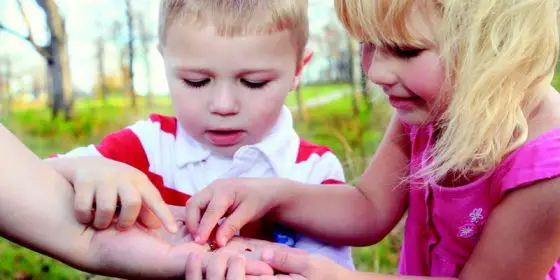
Now you have a home for them. Better yet, you can keep your child entertained for hours as they track the growth of their bug friends.
- What do bugs need to survive?
- What do bugs eat?
- What is the difference between a need and a want?
- Imagination
- Find something that you’re willing to sacrifice to the bugs in order to create a habitat for them – we recommend a shadowbox so that your child can see inside, but a cardboard box will do just fine as well.
- Ensure that there is breathing room for the bugs.
- Create a habitat with sticks, bark, small rocks, dried leaves, and whatever else you can find.
- If you’re willing to hang onto the habitat long enough, use it as an opportunity to talk about decomposition as the bugs begin to break down the twigs.
Long-Term Science Experiments at Home
24. crystal kingdom.
This is the oldest trick in the book, but it’s popular because it’s so effective, fun, and has great results. The only drawback to most crystal-growing recipes is that they take ages to grow, and to be quite honest this one is no exception. In fact, these crystals will take several days to grow but the end result is worth it. The reason is that this experiment involves growing a whole landscape of beautifully colored salt and bluing crystals. Here’s a video for visual reference:
A few things to keep in mind: Allow for plenty of air circulation, preferably inside rather than outside. Ammonia is not necessary but does help in the process.
- What will happen when you add ammonia?
- Why does more salt and less liquid create faster crystallization?
- What part does the bluing solution have in crystal growing?
(Answers can be found here )
- Two bottles of bluing solution
- Large tray/cookie sheets with sides
- Measuring cup
- Liquid watercolors
- Eye droppers
- Cut sponges into large pieces. Spread them out on the tray.
- Measure out 1 cup of each of salt, water, and bluing and then gently mix together.
- Evenly coat or sprinkle the mix over the sponges.
- Add 1 cup of ammonia to the sponges.
- Coat an extra 1 cup of salt on to the sponges.
- By now you’ll see some crystals growing . Sprinkle the magic mix again: 1 cup each of salt, water, and bluing. You can pour the ingredients onto the tray instead of on top of the crystals to keep them from breaking. Don’t worry, more will grow!
- Take an eyedropper, and drop a tablespoon of each liquid watercolor (undiluted) in different patterns over the sponges and crystals.
- Take note of your garden and what the crystal formations look like. You can make a sketch in your notebook as a before and after. Ask questions and observe!
- Observe how the crystals are bigger than before, and notice the colors aren’t as vibrant. Compare the differences in shapes, sizes, and colors.
- If you want more crystals to grow, add a little more water, bluing, and salt.
25. Blow up a Balloon with Yeast
We are surrounded by science in action, but sometimes it is really difficult to see what is happening, especially when it is on a small-scale. When we make bread, yeast ‘eats’ the sugars in the food and creates CO2, giving bread its airy texture. This experiment lets you both visualize what happens when yeast consumes sugar and is a great set-up for an experiment that can be observed throughout the day.
Depending on your supplies and time, you could start with a demonstration and use that to think of other tests, or you could set up several parallel tests at the same time.
- How quickly does the balloon filled with air?
- When does it stop filling (at some point the yeast will run out of food and will stop making gas)?
- Does the starting temperature affect the experiment?
- Does the balloon fill faster in different places in your home (try especially for different air-temperatures, you could include an outside location)?
- Some balloons
- Blow up the balloon a few times before starting so that it’s loosened up a bit.
- Fill the bottle with about 1 inch of warm water (heat is required to activate the yeast, but you could experiment with different temperatures), add the yeast and swirl to dissolve.
- Add the sugar and swirl more.
- Place the balloon over the opening to the bottle and wait. You should expect to see the balloon begin to inflate after around 20 minutes.
- Continue checking and observing how much the balloon inflates throughout the day.
More example experimental setups include:
- Do different temperatures – either with the water you start with or the air the yeast lives in – affect how quickly the balloon blows-up?
- Does using 2x the yeast result in a balloon that is 2x bigger, or blows-up 2x faster?
- Do different types of sugar (e.g., white sugar, honey, syrup, flour) affect how quickly the balloon blows up or how big it gets?
A sk your child to think of new experiments (you could prompt with some of the examples above, or ideas from this post ).
26. Seed Germination
A really simple but fun multi-day experiment is germinating seeds under different conditions. This means finding some quick-sprouting seeds such as beans and putting them in different conditions to see how that affects germination (sprouting leaves and roots) and growth.

I love using seed experiments because they are inexpensive, simple, and leave a ton of room for creating your own unique experiment.
- Which seed will sprout fastest?
- Seeds (Beans, radishes, squashes, and many flowers sprout quickly from large seeds, making them good choices.)
- Small pots or paper cups
- Potting soil
- Cloth or paper towel
- Somewhere with good light
- To get started, you’ll need some seeds – feel free to choose something you already have, if you’re a gardener you might have some seeds ready for the coming season and could spare a few – or find something online or at your local nursery.
- Use small pots or paper cups and fill each with your growth material (we recommend a minimum of 3 for a useful comparison).
- Fill one with potting soil, one with sand, and one with a cloth or paper towel.
- Place them somewhere with good light, and add water.
- Ask your child to predict which seed will sprout fastest, and make observations every day. If possible, make them around the same time each day.
- Once you see growth, you can ask your child what they think caused any differences, and you can use that as a jumping-off point for more experiments
Additionally, you could:
- Use one type of seed and different types of growth media: soil, paper towel, gravel, sand, water, etc.
- You could use different seeds (beans, flowers, grass, herbs) and grow them under the same conditions (soil, water, sun exposure) to see how different plants grow differently.
- You could see how different light conditions (by a window, in the basement, in a bright room away from a window, etc.) affect germination.
You could also extend each experiment by simply continuing to grow each seed to learn whether the different germination time affects long-term growth (you may want to re-pot everything in the soil for this to be effective, depending on the specifics of your initial experiment).
27. Colored Celery
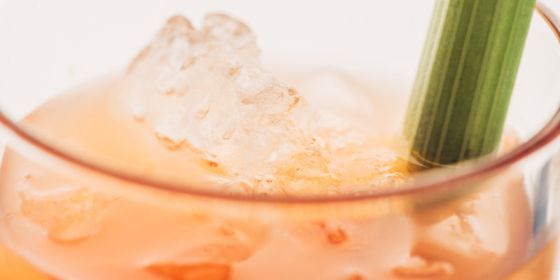
It’s hard to imagine plants having little capillaries inside them that transport water and nutrients, but this experiment shows that in action. It’s easy to set up, but you’ll have to wait at least a day to see some results. Your kids will be able to see how transpiration takes place and plants absorb water from the soil all the way up into their leaves.
- A few stalks of celery (celery works best for this because it’s a bit more visible, but you could also use flower stems)
- Different food coloring
- Place each stalk in a cup of colored water and make your predictions about what will happen.
- After a day or so you’ll see the celery leaves becoming the color of the water they’re standing in.
- Have your kids describe their observations (they can write down what they see or draw it if they prefer).
- If you look at the base of the stem you’ll also see tiny little holes that the colored water is traveling through.
When you’re done with the experiment, make sure you snap the celery and look inside – you should be able to see the capillaries in action. For more ideas, Little Bins for Little Hands has got some great hints and tips for this experiment.
28. Moldy Bread
This experiment is an oldie, but a goodie! Kids love looking at disgusting things and this one will certainly come up with the goods. Not only will kids learn about how mold grows, but they might also take on some lessons about the importance of washing their hands!
You might want to check out the results of this experiment at Science Alert before you start to see if your stomach is up to it.
- A few slices of bread
- Some ziplock bags
- Sticky little hands.
- Get a few slices of bread and lay them out on your kitchen bench.
- Have your kids touch one piece of bread with dirty, unwashed hands.
- They can wash their hands with soap and water and touch another slice, then do the same using hand sanitizer.
- Leave one piece of bread untouched.
- Place them all in clear, labeled ziplock bags and predict which one will grow the most mold.
- Leave your bread slices for at least a week (it may take a bit longer, depending on the conditions where you live) and get the kids to record their observations.
You can also try wiping your bread slices on other surfaces to see what moldy results you get (their laptop or tablet is a great place to start)!
29. Sprouting Beans

Give your household a real survivalist feel by beginning an indoor garden. We recommend planting your beans in a clear cup so that your children can be privy to all of the processes during the plant’s journey.
- How does a plant grow?
- What does germination mean?
- What is in season to grow in our area now?
- Unprocessed Beans
- If you’d like your child to see every step of the process, consider placing the beans inside of a damp paper towel inside of a ziplock.
- You can wait, see the germinated seed together, and then plant it inside of a small cup.
- Once inside the cup, watch it grow.
Extend your work by planting various beans and altering the growth conditions in order see what makes your beans grow best!
30. Begin Composting
Begin your “go green” resolutions by teaching your child the value of composting! Best of all, once the science experiment is done, your family will have a recycling process that will last your entire lifetimes.
- Why is composting important?
- How else can our household go green?
- Why do we need a foundation layer for compost?
- Compost Bin
- Organic Material
- First, create a compost bin. You can purchase one or build one out of wood.
- To begin your composting, you’ll need even amounts of brown materials (think shredded paper, dryer lint, etc.) and green materials (think fruit and vegetable waste, lawn clippings, etc.).
- If you’re really feeling fancy, throw some earthworms in there.
For days to come, your family will be able to discuss what can and cannot be broken down by the decomposers inside of the compost bin. Never-ending science!
31. Turn Grapes Into Raisins

Your kids may or may not eat raising – but we can guarantee you, they’ve likely never considered the option of creating their own!
- What other snacks can we make with science?
- Should we ever eat our experiments?
- How does this work?
- For this experiment, you’ll need grapes. (Really, that’s it!)
Leave your grapes somewhere where they will not be disturbed and use this as an opportunity for your children to journal the changes in the grapes from day to day. Believe it or not, this type of sequential journaling is a valuable literacy skill!
32. DIY Science Experiment
The best science experiment your child can engage in is the one they create themselves! Begin brainstorming a list of questions and let the world be their oyster as they plan and carry out their own experiments. Some of our favorite brainstorming questions, from Scholastic’s Science-Fair Project Guide, are listed below:
- What is the effect of toothpaste brand on teeth-cleaning power?
- What brand of trash bag can withstand the most weight before ripping?
- How does the type of material affect how long a shirt takes to dry?
Written by Miranda Altice, Kaitlin Anselmo, Mark Coster, Allison Ebbets, and Jodie Magrath.

Mark is the driving force behind STEM Geek. With 20 years of experience in chemistry education and research, and 3 willing children as guinea pigs, Mark has a passion for inspiring kids and adults to combine fun and learning with STEM Toys!
Editor’s Picks

7 Best LEGO Star Wars Sets | Our Top Picks of All Time!

Best LEGO Creator Sets – Take Your Pick From These 7 Gems!

How to Use a Metal Detector: 8 Essential Tips to Get the Most of It

Best Metal Detector for Kids: 5 Top Picks (+ Buying Guide)

Best 2+ Player Cooperative Board Games (Top 6 in 2024)

MEL Chemistry Review: Is Your Child the Next Bill Nye?

100+ Easy Science Experiments for Kids To Do at Home (Using Materials You Already Have!)

- Pinterest 1.3K

Looking for fun science experiments to do at home with your kids? We’ve compiled the ultimate list of cool science experiments for kids – most of which can be done with materials you already have on hand!
Children are naturally curious about the world around them, but explaining scientific concepts without a physical demonstration can be confusing, and well, just not fun! We’ve found the best way to teach science is with simple science experiments that provide hands-on learning opportunities – making concepts more accessible, and most importantly, extremely fun and memorable for kids.
We’ve scoured the web to pull together an epic list of the best easy science experiments you can do at home with your kids. Whether you have preschoolers starting at square one, or tweens or teens looking for the ultimate Science Fair project idea, this list has it all – ranging from weather, water and physics experiments, to chemical reactions and explosions (always a kid favorite!).
And you won’t have to make a special trip to the craft or hardware store – almost all of these fun science experiments use common household ingredients that you probably already have at home. Score!
So what are you waiting for – dive right in and have some science fun!
PIN for when you’re ready to perform a fun science experiment:

Science Experiments using Chemistry (Hello, Explosions!)
Your kids will have a blast watching how different materials react and change with these simple chemistry experiments – there’s tons of bubbly explosions, fizzy reactions and rainbow creations to choose from!

(1) These Oozing Pumpkins are sure to bring lots of laughs from your young scientists as you create overflowing reactions from baking soda and white vinegar. (via Little Bins for Little Hands)
(2) Or swap the pumpkin for a lemon to create a miniature volcano right in your kitchen with this Lemon Volcano . (via The Best Ideas for Kids)
(3) Go big or go home with this incredible Watermelon Volcano experiment where you just need a few simple materials including baking soda, dish soap, vinegar and a little bit of food coloring. (via Preschool Play & Learn)
(4) We love this colorful twist on the classic Baking Soda and Vinegar Reaction . It just never gets old! (via Crafts by Amanda)
(5) Grab a baking sheet and try this Fizzing Colors activity to make a bubbly piece of art! (via Mom Wife Busy Life)
(6) A fun Rainbow variation on the classic Baking Soda and Vinegar experiment that is sure to make kids smile. (via The Best Ideas for Kids)
(7) Make these amazing Magical Color Changing Unicorn Noodles with cabbage and then squeeze on some lemon to watch the noodles change color! (via Left Brain Craft Brain)
(8) Learn about reactions on a large scale and turn milk into a work of art with this interactive Giant Magic Milk experiment . (via Hello Wonderful)

(9) Up the ante and make this Vinegar & Baking Soda Rocket – the chemical reaction can make it fly 30-50 feet into the air! (via 123 Homeschool for 4)
(10) Or try this super cool Chemical Reaction Car – it gets a boost from a fizzy reaction from a base (sodium bicarbonate, aka baking soda) and an acid (vinegar) which mix together and release carbon dioxide. (via Left Brain Craft Brain)
(11) Kids love this simple experiment about Apple Oxidation where they can predict which liquid will keep the apple slices from browning, then test their hypothesis. (via Jennifer Findley)
(12) Ever wonder why the Statue of Liberty is green? Get the answer to that question and learn a little bit about a famous US landmark with this cool Penny Science Experiment . (via The Keele Deal)
(13) Wow your kids by making raisins dance! This Dancing Raisins chemical experiment requires minimal ingredients (water + baking soda) but gets maximum results. (via 123 Homeschool 4 ME)
(14) What happens if you drop an egg? It cracks, right? But what if you drop a bouncy egg?! Learn how to make Bouncing Eggs with this fun kitchen experiment. (via 123 Homeschool 4 ME)
(15) It’s an old classic, but it’s still fun to do – try to fit a hardboiled egg into a glass jar with this Egg in a Bottle experiment. (via Left Brain Craft Brain)
(16) Practice fire safety while learning about the relationship between oxygen and fire with this incredibly simple Fire Safety Experiment . (via Mama Smiles)
(17) Impress your kids with this cool Smoking Fingers Trick that makes it look like your fingers are on fire as smoke rises from them! And yes, it’s best to leave this one to the grown-ups for demonstration. (via Left Brain Craft Brain)
(18) Kids will enjoy watching these balloons inflate “on their own” in this fun Balloon experiment . (via All for the Boys)

(19) With a few ingredients from your pantry, you can head outside and try this Exploding Sidewalk Chalk , because who doesn’t love messy explosions?! (via Hess Un-Academy)
(20) How do elephants keep their teeth clean? With Elephant Toothpaste of course! This is one of the best science experiments for kids of all ages – from preschoolers to teens. All it takes is hydrogen peroxide, dry yeast, dish soap and food coloring to make this super cool foamy reaction. (via Teach Beside Me)
(21) Kids (and parents) will enjoy seeing the “lava” flowing in this fun experiment where you can Take a Look Inside of a Volcano ! (via 123 Homeschool 4 Me)
(22) How pretty are these Crystal Flowers ? They’re a craft and science experiment all in one! (via Preschool Play & Learn)
(23) Make your own sweet treat, with this Fizzy Sherbet and learn the science behind why it tickles your tongue. (via Go Science Kids)
(24) Grab all your dull pennies and task your little scientists to try different solutions to determine How to Clean Pennies , then learn why some solutions work better than others. (via Gally Kids)
Weather Science Experiments for Kids
Why is it rainy one day and sunny the next? What causes thunder and lightning? How do clouds form?
The weather is always changing and easily observable by kids. That makes weather experiments not only super fun, but incredibly relevant for children of all ages. Explore weather-related science with these easy experiments:

(1) Have fun creating your very own rain clouds using shaving cream and food coloring with this Rain Cloud in a Jar activity. (via The Best Ideas for Kids)
(2) If you’ve got a marker and a plastic zipper bag, your kids will love getting to watch the water cycle in action by creating their very own Water Cycle in a Bag . (via Playdough to Plato)
(3) Or simply use a glass bowl and some ice cubes for a Water Cycle Experiment on the kitchen counter! (via Taming Little Monsters)
(4) Alternatively, reuse plastic bottles for a hands-on Water Cycle Experiment . (via 123 Homeschool 4 ME)
(5) Now that you know all about the water cycle, why not Build Your Own Rain Gauge ? (via Nurture Store)
(6) Learn what happens when warm air rises and cool air sinks with this colorful simple experiment. (via Mom Brite)
(7) Kids will love watching a cloud form and escape when you Create a Cloud in a Water Bottle . (via Playing with Rain)
(8) If you don’t have an empty water bottle lying around, you can check out this post to create another billowing cloud using a mason jar . It is so exciting to watch the clouds roll out of the jars! (via Little Bins for Little Hands)

(9) This Tornado in a Jar is one of the most classic science experiments and is always a hit with kids. (via Natural Beach Living)
(10) Light a fire and learn about how heat moves from the Earth in this Observing Conduction experiment. (via Learn, Play, Imagine)
(11) If it’s too cold to go out and play, make the most of your time inside with this Snowstorm in a Jar . (via Taming Little Monsters)
(12) You can create your own lightning spark at home with static electricity by using just a balloon and a metal spoon! (via Learn, Play, Imagine)
(13) Have you ever wondered how hail forms? Well, you’re in luck! Grab your hair dryer for this Understanding Hail activity . (via Playing with Rain)
(14) Watch wind create energy by Making a Pinwheel. (via Science Sparks)
(15) Your kids will love learning about ice caps and polar regions with this fun sensory Melting Polar Ice Caps science activity. (via Science Sparks)
(16) And if that’s not enough snow, you can kick it up a notch with this Avalanche Experiment . (via A Dab of Glue Will Do)
(17) Grab some sidewalk chalk on a sunny day for a Human Sundial Experiment . (via Rhythms of Play)
(18) Make your own Rainbow and learn about refraction and dispersion of light. (via Rookie Parenting)
Easy Science Experiments with Candy
Adding candy makes anything more exciting for kids (or at least more sweet!), and these cool candy science experiments are no exception.
These experiments are easy, fun, and a great way to use up any extra candy that might be hanging around after the holidays!
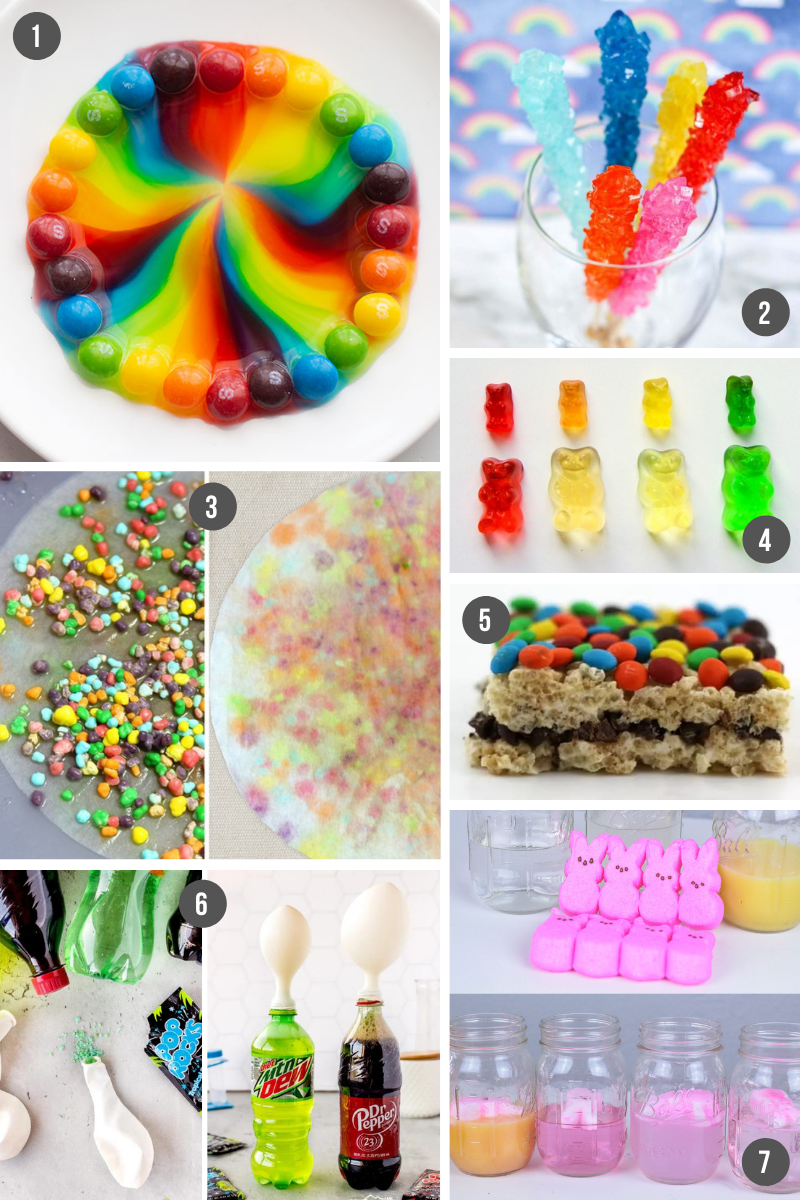
(1) Create a rainbow on your plate with this stunning Easy Skittles Experiment . (via The Best Ideas for Kids)
(2) Now this is an experiment that kids will get excited about! Make your own Homemade Rock Candy while learning about the crystallization process. (via Better Life Blog)
(3) Explore chromatography, a technique for separating difference substances (in this case, candy and dye), with this cool Candy Chromatography kid-friendly experiment. (via Mama Miss)
(4) Learn about osmosis and watch gummy candy magically grow with this simple Gummy Bear Science Experiment . (via Playdough to Plato)
(5) Does your child like to collect rocks? Why not let them dig deeper by making these Edible Sedimentary Rocks . (via Rainy Day Mum)
(6) Watch your kids get excited as you make Pop Rocks blow up a balloon in this epic Pop Rock Science Experiment . (via 123 Homeschool 4 ME)
(7) While many people either love or do not love bright marshmallow Peeps, everyone will love learning what makes them dissolve in this Dissolving Peeps experiment. (via A Dab of Glue Will Do)
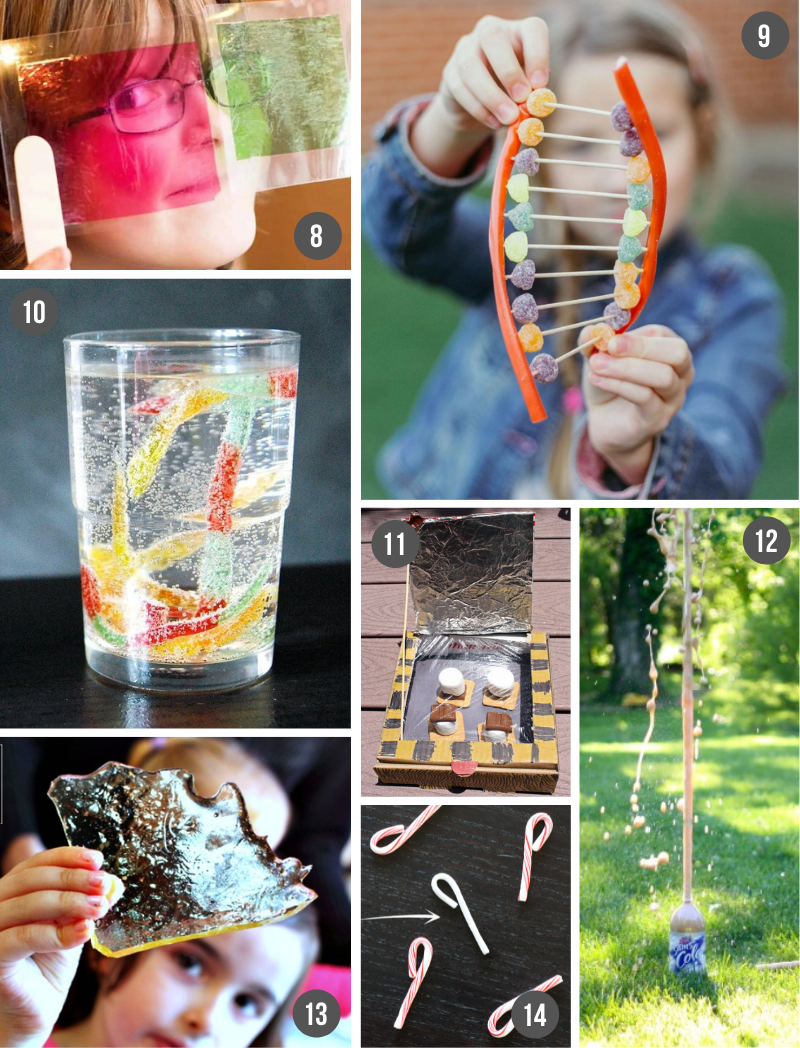
(8) If your candy has transparent colored wrappers, you can save them to learn about color mixing in with this fun color science project . (via Kids’ Craft Room)
(9) There are many ways to learn about the human body, but we’re pretty sure that the sweetest way is with candy. Kids of all ages will love making this Candy DNA Model . (via Science Sparks)
(10) Your kids won’t be the only wiggle worms in the house with these fun Dancing Frankenworms . (via Playdough to Plato)
(11) Learn how powerful the sun can be with these DIY Solar Oven S’mores . We bet you can’t eat just one! (via Desert Chica)
(12) Your little scientists will LOVE this Mentos Geyser which will teach them what happens when carbon dioxide in Soda meets a Mentos candy, while putting on quite the display! (via I Can Teach My Child)
(13) Usually we’d advise that kids stay far away from broken glass – unless, this is, it’s this yummy Edible Glass ! (via Go Science Kids)
(14) This is a simple science experiment and a magic trick! Find out what happens to sugar when emerged in warm water with this cool Disappearing Candy Cane Stripes experiment. (via Playdough to Plato)
Science Experiments Using Water
If there is anything that is almost universally fun for kids, it’s playing with water. Try one of these fun water science experiments that are perfect for a rainy day indoors, or for keeping cool on a sunny day!

(1) If your little one enjoys all things colorful, they will love this incredible Walking Water Science Experiment – and all you need are paper towels, water and food coloring to get started. (via The Best Ideas for Kids)
(2) Your kids won’t believe their eyes when they see cabbage changing colors in this fun Rainbow Cabbage experiment . (via Growing a Jeweled Rose)
(3) Discover how different liquids react together with this easy experiment that creates a colorful Layered Density Column . (via Steve Spangler Science)
(4) Or learn how water travels upward through vines and stems all while creating a beautiful bouquet with these Color Changing Flowers . (via The Best Ideas for Kids)
(5) Observe how different liquids do or do not mix by creating Fireworks in a Jar . (via Hands on Teaching Ideas)
(6) Find out how temperature affects the density of water with this colorful Hot and Cold Water Density experiment. (via STEAMsational)
(7) “Grow” your own Rainbow with this colorful science experiment that highlights chromatography. (via The Best Ideas for Kids)

(8) Keep exploring the concept of absorption, diffusion and solubility while bringing out your creative side with this Coffee Filter Process Art . (via Babble Dabble Do)
(9) See how quickly you can move water from one container to the next using sponges in this fun Water Transfer Activity. (via Live Well Play Together)
(10) Play with water and Bubbles while learning about surface tension and evaporation. (via Hello Wonderful)
(11) Who else had a lava lamp growing up? This DIY Frozen Lava Lamp experiment is not only simple and fun, but brings back the lava lamp nostalgia! (via Hello Wonderful)
(12) Explore the relationship between gas, pressure, and volume in this easy Rising Water Experiment . (via Team Cartwright)
(13) Explore the power of water pressure with this low-prep, big fun Water Suspension Science activity. (via A Mothership Down)
(14) If you are looking for an activity that you can do almost anywhere, take a couple of minutes for this Water Light Refraction Experiment . (via Go Science Kids)
(15) Learn about absorption and expansion by Measuring Water Beads. (via Blue Bear Wood)
(16) Kids will love watching their drawings come to life with these Floating Dry Erase Figures . So cool! (via Go Science Girls)
(17) What will happen if you poke a hole in a bag full of water? Will it leak? Not with this Leak Proof Bag experiment. (via Montessori from the Heart)
Life Science Experiments for Kids
One of our favorite things to learn about is how living things (ourselves included) work. These life science experiments and activities will spark your child’s curiosity about the world around them!

Life Science Experiments about the Human Body:
(1) Learn how our heart pumps blood to our bodies with this Heart Pump Model . (via Science Sparks)
(2) Your child can learn how our lungs work by making a Model Lung with simple materials you probably have around the house: a plastic bottle, straw, elastic band, balloons and play dough! (via Science Sparks)
(3) These printable life-sized organs allow kids to study their body anatomy in a hands-on way. (via Adventure in a Box)
(4) Learn all about scabs – what causes them (and why they’re so important not to pick!) by making a Fake Jelly Scab that can then be eaten! (via Science Sparks)
(5) If you’re willing to brave glitter, this Glitter Germs Hand Washing Activity teaches children the importance of thorough hand washing while talking about how germs spread. (via The Soccer Mom Blog)
(6) Or, try this Growing Germs easy science experiment which uses an apple and your own child’s germs to not only teach kids to wash their hands, but all about controls and variables too! (via Playdough to Plato)
(7) Demonstrate how tooth decay happens and how to prevent it by soaking eggshells in various liquids in this Tooth Decay experiment. Is sugar a culprit? A great lesson for kids. (via Sciencing)
(8) This super easy Heart Rate Investigation will teach your kids about their heart, blood circulation and pulse, but also get them moving! (via Science Sparks)
(9) Your budding artists will love this Magic Heart Painting activity. Watch the cardiovascular system appear before their eyes! (via Taming Little Monsters)

Life Science Experiments with Plants:
(10) How do different liquids affect plant growth? Find out with this Plant Growth experiment – it’s one of our favorite science experiments and makes a great Science Fair Project! (via Lemon Lime Adventures)
(11) Discuss how plants grow and what they need to thrive by growing a Bean in a Jar . (via Growling a Jeweled Rose)
(12) Or use a plastic bag instead! All you need is a Ziploc baggie, a few beans and a damp paper towel to Grow Beans in a Bag . (via Community Playthings)
(13) Combine engineering and science while learning all about germination with this DIY Sprout House . (via The STEM Laboratory)
(14) Observe plant growth both above and beneath the “ground” by planting bulbs in a clear cup . (via Buggy and Buddy)
(15) Watch how plants respond to sunlight in this super easy Plant and Sunlight Experiment . (via Mama Smiles)
(16) Kids will love learning How Leaves Breathe with this simple plant experiment. (via Edventures with Kids)
(17) Did you know that you can grow vegetables with scraps? Watch your scrap veggies grow new life with a Scrap Garden . (via Hess UnAcademy)
Easy Physics Science Experiments for Kids
Learn how things move with these simple physics experiments for kids. Physics is the branch of science that studies matter, how it moves, and how it interacts – it encompasses the study of motion, light, electricity, magnetism, aerodynamics, and sound.
We’ve found that the best way to explain physics to kids is to skip the explanation and do a hands-on demonstration instead. Use these fun experiments to jump feet first into the world of Physics:

(1) First off, a classic Craft Stick Catapult ! This simple activity is a great way to teach about energy cause and effect, as well as simple machines…and you thought you were just going to be launching marshmallows across the room! (via Team Cartwright)
(2) Explore physics and play at the same time with these awesome Pom Pom Shooters . (via Left Brain Craft Brain)
(3) This classic science fair project will teach your kids how to use chemistry to generate an electric current by making a Lemon/Lime Battery ! (via Babble Dabble Do)
(4) Explore the science of sound with this pretty Rainbow Water Xylophone . (via Mama Papa Bubba)
(5) Make a simple Newton’s Cradle out of popsicle sticks, string and marbles to demonstration the conservation of momentum – kids loooove this one! (via Babble Dabble Do)
(6) Send a balloon blasting off and introduce simple physics with these neat Balloon Straw Rockets . (via Preschool Play & Learn)
(7) Grab some plastic bottles and string to make this fun Inertia Zoom Ball – a project kids can learn and play with! (via What Do We Do All Day)
(8) Popsicle sticks, rubber bands and some blocks are all you need to make a Stixplosion – demonstrating chain reactions which you can use to teach about kinetic and potential energy. (via Babble Dabble Do)

(9) Make a Salty Circuit to introduce your kids to electricity and how it moves from a battery through a circuit to power an LED. (via Babble Dabble Do)
(10) Demonstrate work and energy with this super cool Paper Airplane Launcher . (via Frugal Fun 4 Boys and Girls)
(11) Visually show the concept of gravity with this easy Gravity Activity with Paperclips . (via Buggy and Buddy)
(12) If you’re feeling particularly ambitious, you can create your own Light Bulb Experiment to see how electricity travels through a circuit. (via 123 Homeschool for Me)
(13) Discover what things are magnetic and vice versa with this fun Magnet Fishing Game . Great for preschoolers! (via Rhythms of Play)
(14) Baseball fans will enjoy this Frozen Baseball Experiment to observe how temperature affects how a baseball travels. (via Our Family Code)
(15) Learn more about inertia with these easy Inertia Science Experiments with Pennies . (via Frugal Fun 4 Boys and Girls)
(16) This awesome Rollback Can is a simple physics project that will amaze your kids and demonstrate potential and kinetic energy. (via Babble Dabble Do)
(17) These 4 Magical Magnet Projects will teach your kids about magnetism, and they’ll be mesmerized by its power! (via Babble Dabble Do)
States of Matter Science Experiments for Kids
All matter is either a solid, liquid, or gas, right? Or is it? And what happens to make some matter change states more easily than others? Kids will love these easy States of Matter science activities where they will get to learn the answers to those questions and more!

(1) This Simple Balloon experiment will teach young kids all about the 3 states of matter with a Hands-on Density test. (via 123 Homeschool 4 ME)
(2) Watch as liquid cream becomes a solid by making your own Homemade Butter . Make sure you taste test it too! (via Playdough to Plato)
(3) And because it’s always a good time for ice cream, see how simple ingredients come together and change state when you make this Ice Cream in a Bag . It’s also a great activity to discuss an exothermic reaction, a chemical reaction that releases light or heat. In this instance, heat is released from the shaking, yet it freezes the cream – science sure is amazing! (via House of Nash Eats)
(4) Fill up balloons with different types of liquid in this fun Water Balloon Science Experiment and then try and predict if they will float or sink in water. (via 123 Homeschool 4 ME)
(5) A messy project that is universally loved by kids – Oobleck ! This Non-Newtonian fluid can act like a solid and a liquid. And you can make it at home as long as you’ve got cornstarch in your pantry. (via The Best Ideas for Kids)
(6) Task your kids to create an insulated box for an ice cube using materials from around the house in this Don’t Melt the Ice experiment. (via Frugal Fun 4 Boys and Girls)
We hope this list of easy science experiments for kids proves that science doesn’t have to be complicated…or boring! With materials you already have at home, you can create a memorable learning experience, and you definitely don’t need a lab coat to watch science come alive!
RELATED: Looking for more fun indoor activities to keep your kids busy? Check out 87 Energy-Busting Indoor Games & Activities for Kids (because cabin fever is no joke!)
What’s your favorite science experiment? Let us know your favorites in the comments below!

Mary Leigh is a stay-at-home mom to 3 fun and active boys. She started her blog, Live Well Play Together , as a creative way to encourage moms to celebrate the simple, everyday moments in motherhood. You can most often find her writing about kids’ activities, thoughts on motherhood, and simple ideas for family fun. Follow her on Pinterest , Instagram , Facebook , and Twitter for fun ideas to bring a little fun to your everyday!

Similar Posts
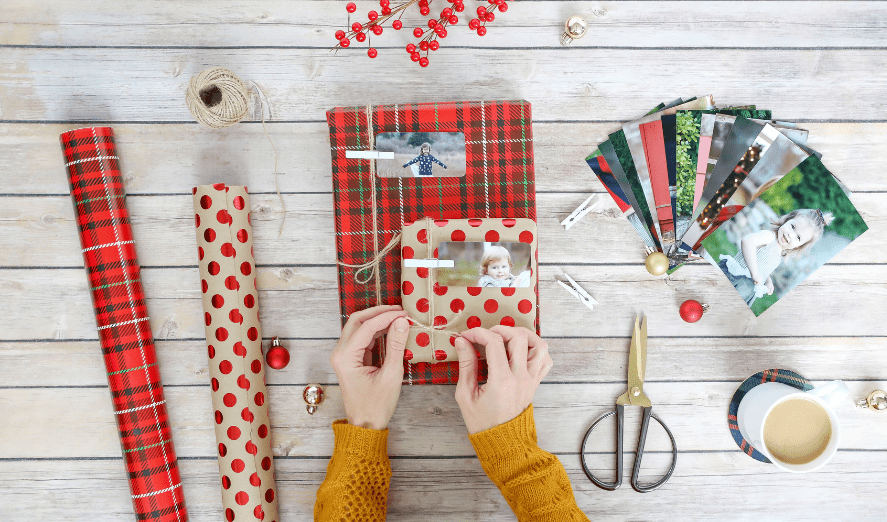
Creative DIY Gift Wrapping Ideas For Kids: Personalize Their Presents For Birthdays, Christmas, Or Just To See Them Smile.

The BEST Easy Card Games for Kids. Classic Fun with Just One Deck!

Creative Crayon Crafts & Art Projects

The Best Outdoor Water Activities to Keep Your Kids Cool This Summer

Unique 5th Birthday Party Ideas for Boys and Girls Turning 5!

Free Printable Father’s Day Booklet. A Homemade Gift Sure To Melt Daddy’s Heart.
Comments brighten our day. leave one here. cancel reply, featured in.

Unique & Useful Party Favor Ideas for Kids That Aren’t Junk!

Tween Boy Birthday Party Ideas – Fun Themes & Activities!

90+ Fun Indoor Birthday Party Games For Kids of All Ages

Creative Mother Daughter Photoshoot Ideas. Top Poses & Tips!

IMAGES
COMMENTS
Educational & Fun Learning Items for Toddlers, Preschoolers, Kids, Teens. Making The World Smarter Through Playful Learning. Shop Now!
Shop by age, favorite brands, new products, best sellers, and gifts for birthdays. Browse & discover thousands of brands. Read customer reviews & find best sellers
Dive into 100 easy science experiments for kids to do at home, featuring activities like Traveling Rainbows, making slime, exploring colors with baking soda and vinegar, and revealing secret messages with invisible ink. Perfect for curious minds eager to learn through fun, hands-on science.
Try these easy science experiments using items you already have around the house or classroom. ... Tell kids you're going to make slime at home, and watch their eyes light up! There are a variety of ways to make slime, so try a few different recipes to find the one you like best. ... Cool Science Experiments HQ. 39. Whip up a tornado in a bottle.
Explore science experiments by category, popularity, or difficulty level. Learn about density, acids and bases, volcanoes, lava lamps, and more with simple ingredients and instructions.
This germ-growing science project for kids will help them understand how even the cleanest-looking surfaces (and hands) can be filled with germs, is one of the easiest science experiments for kids we've found. Get the fun and yucky instructions at Kids Activity Blog. Messiness factor: One sponge
Find over 35 fun and simple science activities for kids using household items or inexpensive materials. Learn about sound, density, viscosity, magnetism, and more with easy explanations and video tutorials.
WHY NOT TRY A FUN SCIENCE EXPERIMENT RIGHT NOW? Here's list of great science experiments with instructions that you can do right at home or at school. In order for your science experiment to be safe and successful, be sure to: Get your parent's or teacher's permission, and their help; Follow the directions as written
Learn about zoology, chemistry, magnets, weather, plants, and more with these fun and easy science projects for kids. From insect hotels to edible rock candy, you'll find 37 ideas to spark your curiosity and creativity.
Here are 32 home science experiments that are simple, fun, AND educational! If you're looking for at-home science experiments to do with the kids, look no further. Here are 32 home science experiments that are simple, fun, AND educational! ... If you or your child are musical, you could get very elaborate and creative (try googling harry potter ...
Popular KiwiCo, Green Kid Crafts, and Mel Chemistry subscription boxes send age-appropriate projects every month, so you never run out of science experiments you can do at home. Kids can make their own sweet treat with this science experiment: rock candy in a glass. Photo courtesy of Wikivisuals. Coolest Science Experiments for Kids at Home 1.
Try one of these fun water science experiments that are perfect for a rainy day indoors, or for keeping cool on a sunny day! (1) If your little one enjoys all things colorful, they will love this incredible Walking Water Science Experiment - and all you need are paper towels, water and food coloring to get started.